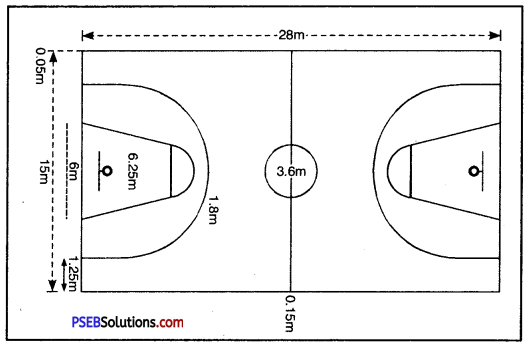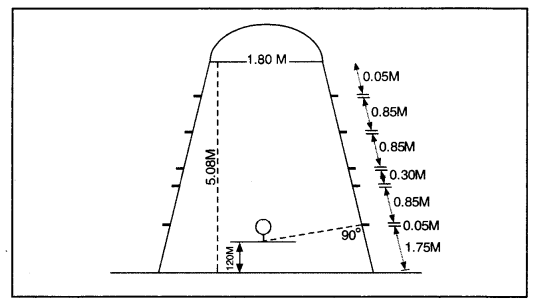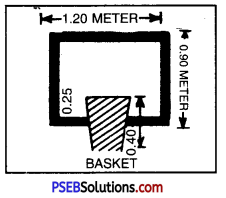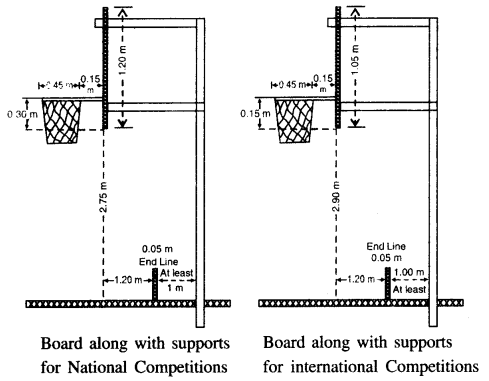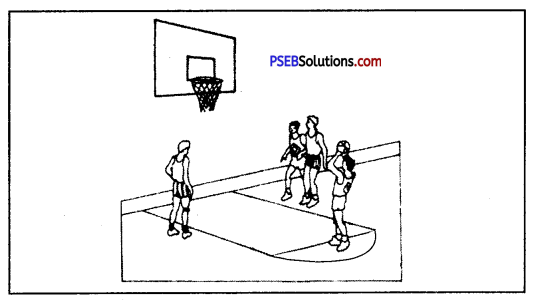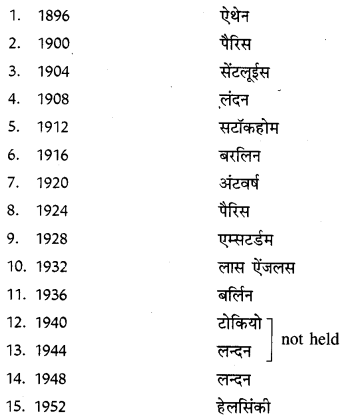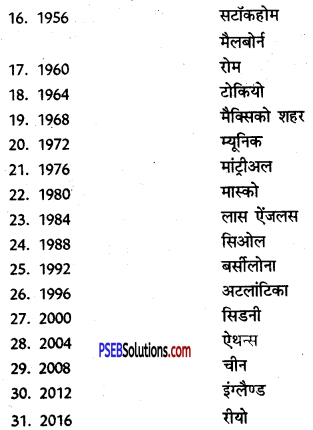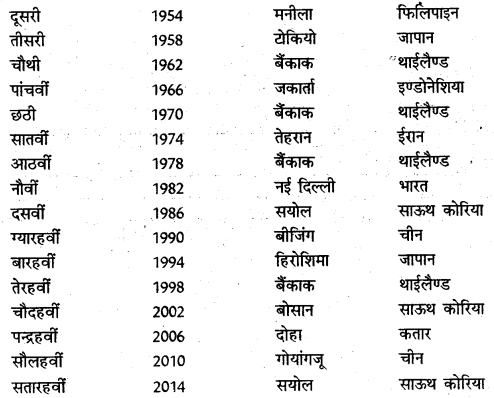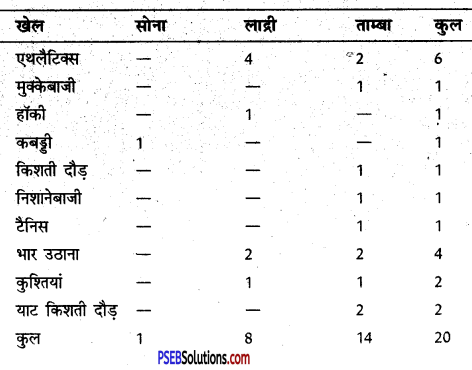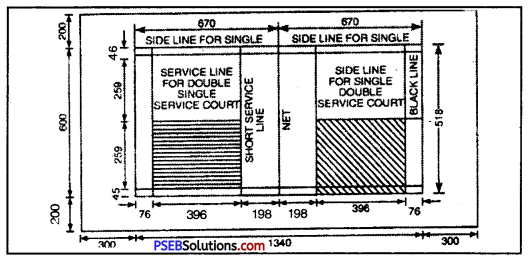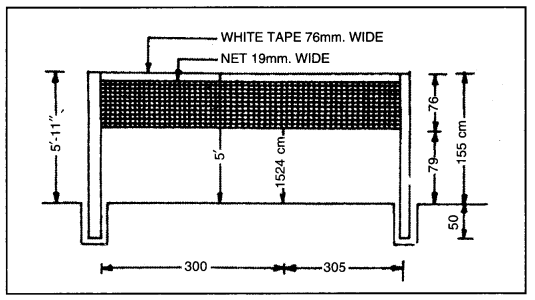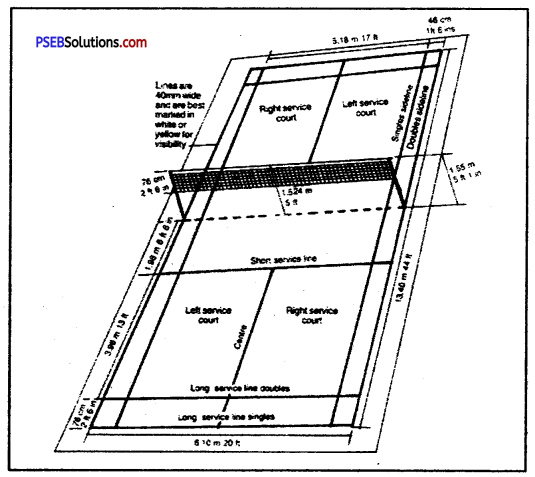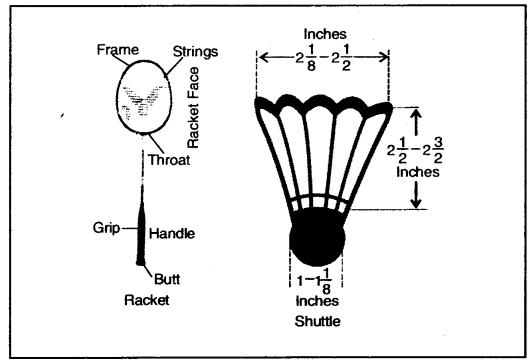Punjab State Board PSEB 10th Class Social Science Book Solutions History Chapter 4 गुरु अंगद देव जी से लेकर गुरु तेग बहादुर जी तक सिक्ख गुरुओं का योगदान Textbook Exercise Questions and Answers.
PSEB Solutions for Class 10 Social Science History Chapter 4 गुरु अंगद देव जी से लेकर गुरु तेग बहादुर जी तक सिक्ख गुरुओं का योगदान
SST Guide for Class 10 PSEB गुरु अंगद देव जी से लेकर गुरु तेग बहादुर जी तक सिक्ख गुरुओं का योगदान Textbook Questions and Answers
(क) निम्नलिखित प्रत्येक प्रश्न का उत्तर एक शब्द/एक पंक्ति (1-15 शब्दों) में लिखो
प्रश्न 1.
भाई लहना किस गुरु का पहला नाम था?
उत्तर-
गुरु अंगद साहिब का।
प्रश्न 2.
लंगर प्रथा से क्या भाव है?
उत्तर-
लंगर प्रथा अथवा पंगत से भाव उस प्रथा से है जिसके अनुसार सभी जातियों के लोग बिना किसी भेदभाव के एक ही पंगत में इकट्ठे बैठकर खाना खाते थे।
प्रश्न 3.
गोइन्दवाल में बाऊली (जल स्त्रोत) की नींव किस गुरु ने रखी थी?
उत्तर-
गोइन्दवाल में बाऊली की नींव गुरु अंगद देव जी ने रखी थी।

प्रश्न 4.
अकबर कौन-से गुरु को मिलने गोइन्दवाल आया?
उत्तर-
अकबर गुरु अमरदास जी से मिलने गोइन्दवाल आया था।
प्रश्न 5.
मसन्द प्रथा के उद्देश्य लिखिए।
उत्तर-
मसन्द प्रथा के मुख्य उद्देश्य थे-सिक्ख धर्म के विकास कार्यों के लिए धन एकत्रित करना तथा सिक्खों को संगठित करना।
प्रश्न 6.
सिक्खों के चौथे गुरु कौन थे तथा उन्होंने कौन-सा शहर बसाया?
उत्तर-
गुरु रामदास जी सिक्खों के चौथे गुरु थे जिन्होंने रामदासपुर (अमृतसर) नामक नगर बसाया।

प्रश्न 7.
हरिमंदिर साहिब की नींव कब तथा किसने रखी?
उत्तर-
हरिमंदिर साहिब की नींव 1589 ई० में उस समय के प्रसिद्ध सूफ़ी सन्त मियां मीर ने रखी।
प्रश्न 8.
हरिमंदिर साहिब के चारों तरफ दरवाज़े रखने से क्या भाव है?
उत्तर-
हरिमंदिर साहिब के चारों तरफ दरवाज़े रखने से भाव यह है कि यह पवित्र स्थान सभी वर्गों, सभी जातियों और सभी धर्मों के लिए समान रूप से खुला है।
प्रश्न 9.
गुरु अर्जन देव जी द्वारा स्थापित किए गए चार शहरों के नाम लिखिए।
उत्तर-
तरनतारन, करतारपुर, हरगोबिन्दपुर तथा छहरटा।

प्रश्न 10.
‘दसवन्ध’ से क्या भाव है?
उत्तर-
‘दसवन्ध’ से भाव यह है कि प्रत्येक सिक्ख अपनी आय का दसवां भाग गुरु जी के नाम भेंट करे।
प्रश्न 11.
‘आदि ग्रन्थ’ का संकलन क्यों किया गया?
उत्तर-
आदि ग्रन्थ साहिब का संकलन सिक्खों को गुरु साहिबान की शुद्धतम तथा प्रामाणिक वाणी का ज्ञान करवाने के लिए किया गया।
प्रश्न 12.
लंगर प्रथा के बारे में आप क्या जानते हो?
उत्तर-
लंगर प्रथा का आरम्भ गुरु नानक साहिब ने सामाजिक भाईचारे के लिए किया।

प्रश्न 13.
गुरु अंगद देव जी संगत प्रथा के द्वारा सिक्खों को क्या उपदेश देते थे?
उत्तर-
गुरु अंगद देव जी संगत प्रथा के द्वारा सिक्खों को ऊंच-नीच के भेदभाव को भूल कर प्रेमपूर्वक रहने की शिक्षा देते थे।
प्रश्न 14.
गुरु अंगद देव जी की पंगत-प्रथा के बारे में जानकारी दो।
उत्तर-
गुरु अंगद देव जी ने गुरु नानक देव जी के द्वारा चलाई गई पंगत-प्रथा (लंगर) को आगे बढ़ाया जिसका खर्च सिक्खों की कार सेवा से चलता था।
प्रश्न 15.
गुरु अंगद देव जी द्वारा स्थापित अखाड़े के बारे में लिखिए।
उत्तर-
गुरु अंगद देव जी ने सिक्खों को शारीरिक रूप से मज़बूत बनाने के लिए खडूर साहिब के स्थान पर एक अखाड़ा बनवाया।

प्रश्न 16.
गोइन्दवाल के बारे में आप क्या जानते हो?
उत्तर-
गोइन्दवाल नामक नगर की स्थापना गुरु अंगद देव जी ने की जो सिक्खों का एक प्रसिद्ध धार्मिक केन्द्र बन गया।
प्रश्न 17.
गुरु अमरदास जी के जाति-पाति के बारे में विचार बताओ।
उत्तर-
गुरु अमरदास जी जातीय भेदभाव तथा छुआछूत के विरोधी थे।
प्रश्न 18.
सती प्रथा के बारे में गुरु अमरदास जी के क्या विचार थे?
उत्तर-
गुरु अमरदास जी ने सती प्रथा का खण्डन किया।

प्रश्न 19.
गुरु अमरदास जी ने जन्म, विवाह तथा मृत्यु सम्बन्धी क्या सुधार किए?
उत्तर-
गुरु अमरदास जी ने जन्म तथा विवाह के अवसर पर ‘आनन्द’ वाणी का पाठ करने की प्रथा चलाई और सिक्खों को आदेश दिया कि वे मृत्यु के समय ईश्वर का स्तुति तथा भक्ति के शब्दों का गायन करें।
प्रश्न 20.
रामदासपुर या अमृतसर की स्थापना की महत्ता बताइए।
उत्तर-
रामदासपुर की स्थापना से सिक्खों को एक अलग तीर्थ-स्थान तथा महत्त्वपूर्ण व्यापारिक केन्द्र मिल गया।
प्रश्न 21.
लाहौर की बाऊली (जल स्त्रोत) के बारे में जानकारी दीजिए।
उत्तर-
लाहौर के डब्बी बाज़ार में बाऊली का निर्माण गुरु अर्जन देव जी ने करवाया।

प्रश्न 22.
गुरु अर्जन देव जी को आदि ग्रन्थ साहिब की स्थापना की आवश्यकता क्यों पड़ी?
उत्तर-
गुरु अर्जन देव जी सिक्खों को एक पवित्र धार्मिक ग्रन्थ देना चाहते थे, ताकि वे गुरु साहिबान की शुद्ध वाणी को पढ़ तथा सुन सकें।
प्रश्न 23.
गुरु अर्जन देव जी के समय घोड़ों के व्यापार के लाभ बताएं।
उत्तर-
इस व्यापार से सिक्ख धनी बने और गुरु साहिब के खज़ाने में भी धन की वृद्धि हुई।
प्रश्न 24.
गुरु अर्जन देव जी के समाज सुधार के कोई दो काम लिखो।
उत्तर-
गुरु अर्जन देव जी ने विधवा विवाह के पक्ष में प्रचार किया और सिक्खों को शराब तथा अन्य नशीली वस्तुओं का सेवन करने से मना किया।

प्रश्न 25.
गुरु अर्जन देव जी तथा अकबर के सम्बन्धों का वर्णन करो।
उत्तर-
गुरु अर्जन देव के सम्राट अकबर के साथ मैत्रीपूर्ण सम्बन्ध थे।
प्रश्न 26.
जहांगीर गुरु अर्जन देव जी को क्यों शहीद करना चाहता था?
उत्तर-
जहांगीर को गुरु अर्जन देव जी की बढ़ती हुई ख्याति से ईर्ष्या थी।
अथवा
जहांगीर को इस बात का दुःख था कि हिन्दुओं के साथ-साथ कई मुसलमान भी गुरु साहिब से प्रभावित हो रहे हैं।
प्रश्न 27.
मीरी तथा पीरी तलवारों की विशेषताएं बताएं।
उत्तर-
‘मीरी’ तलवार सांसारिक विषयों में नेतृत्व का प्रतीक थी, जबकि पीरी’ लकार आध्यात्मिक विषयों में नेतृत्व का प्रतीक थी।

प्रश्न 28.
अमृतसर की किलाबन्दी बारे गुरु हरगोबिन्द जी ने क्या किया?
उत्तर-
गुरु हरगोबिन्द साहिब ने अमृतसर की रक्षा के लिए इसके चारों ओर एक दीवार बनवाई और नगर में ‘लोहगढ़’ नामक एक किले का निर्माण करवाया।
(ख) निम्नलिखित प्रत्येक प्रश्न का उत्तर लगभग 30-50 शब्दों में लिखिए
प्रश्न 1.
गोइन्दवाल की बाऊली (जल स्रोत) का वर्णन करो।
उत्तर-
गोइन्दवाल नामक स्थान पर बाऊली (जल स्रोत) का निर्माण कार्य गुरु अमरदास जी ने पूरा किया जिसका शिलान्यास गुरु अंगद देव जी के समय में किया गया था। गुरु अमरदास जी ने इस बावली में 84 सीढ़ियां बनवाईं। उन्होंने अपने शिष्यों को बताया कि जो सिक्ख प्रत्येक सीढ़ी पर श्रद्धा और सच्चे मन से ‘जपुजी साहिब’ का पाठ करके 84वीं सीढ़ी पर स्नान करेगा वह जन्म-मरण के चक्कर से मुक्त हो जाएगा और मोक्ष को प्राप्त करेगा। डॉ० इन्दू भूषण बनर्जी लिखते हैं, “इस बाऊली की स्थापना सिक्ख धर्म के इतिहास में एक महत्त्वपूर्ण कार्य था।” गोइन्दवाल की बाऊली सिक्ख धर्म का प्रसिद्ध तीर्थ स्थान बन गई। इस बाऊली पर एकत्रित होने से सिक्खों में आपसी मेल-जोल की भावना भी बढ़ी और वे परस्पर संगठित होने लगे।
प्रश्न 2.
मंजी-प्रथा से क्या भाव है तथा इसका क्या उद्देश्य था?
उत्तर-
मंजी प्रथा की स्थापना गुरु अमरदास जी ने की थी। उनके समय में सिक्खों की संख्या काफ़ी बढ़ चुकी थी। परन्तु गुरु जी की आयु अधिक होने के कारण उनके लिए एक स्थान से दूसरे स्थान पर जाकर अपनी शिक्षाओं का प्रचार करना कठिन हो गया था। अत: उन्होंने अपने सारे आध्यात्मिक प्रदेश को 22 भागों में बांट दिया। इनमें से प्रत्येक भाग को ‘मंजी’ कहा जाता था। प्रत्येक मंजी छोटे-छोटे स्थानीय केन्द्रों में बंटी हुई थी जिन्हें पीढ़ियां (Piris) कहते थे। मंजी प्रणाली का सिक्ख धर्म के इतिहास में विशेष महत्त्व है। डॉ० गोकुल चन्द नारंग के शब्दों में, “गुरु जी के इस कार्य ने सिक्ख धर्म की नींव सुदृढ़ करने तथा देश के सभी भागों में इसका प्रचार कार्य को बढ़ाने में विशेष योगदान दिया।”

प्रश्न 3.
गुरु अमरदास जी ने सिक्खों को उदासी मत से कैसे अलग किया?
उत्तर-
गुरु नानक देव जी के बड़े पुत्र श्रीचन्द जी ने उदासी सम्प्रदाय की स्थापना की थी। उसने संन्यास का प्रचार किया। यह बात गुरु नानक देव जी की शिक्षाओं के विरुद्ध थी। गुरु अंगद देव जी ने सिक्खों को स्पष्ट किया कि सिक्ख धर्म गृहस्थियों का धर्म है। इसमें संन्यास का कोई स्थान नहीं है। उन्होंने यह भी घोषणा की कि वह सिक्ख जो संन्यास में विश्वास रखता है, सच्चा सिक्ख नहीं है। इस प्रकार उदासियों को सिक्ख सम्प्रदाय से अलग करके गुरु अंगद देव जी ने सिक्ख धर्म को ठोस आधार प्रदान किया।
प्रश्न 4.
गुरु अमरदास जी ने ब्याह की रस्मों में क्या सुधार किए?
उत्तर-गुरु अमरदास जी के समय समाज में जाति मतभेद का रोग इतना बढ़ चुका था कि लोग अपनी जाति से बाहर विवाह करना धर्म के विरुद्ध मानने लगे थे। गुरु जी का विश्वास था कि ऐसे रीति-रिवाज लोगों में फूट डालते हैं। इसीलिए उन्होंने सिक्खों को जाति-मतभेद भूल कर अन्तर्जातीय विवाह करने का आदेश दिया। उन्होंने विवाह की रीतियों में भी सुधार किया। उन्होंने विवाह के समय रस्मों, फेरों के स्थान पर ‘लावां’ की प्रथा आरम्भ की।
प्रश्न 5.
आनन्द साहिब बारे लिखो।
उत्तर-
गुरु अमरदास जी ने एक नई वाणी की रचना की जिसे आनन्द साहिब कहा जाता है। गुरु साहिब ने अपने सिक्खों को आदेश दिया कि जन्म, विवाह तथा खुशी के अन्य अवसरों पर ‘आनन्द’ साहिब का पाठ करें। इस राग के प्रवचन से सिक्खों में वेद-मन्त्रों के उच्चारण का महत्त्व बिल्कुल समाप्त हो गया। आज भी सभी सिक्ख जन्म-विवाह तथा प्रसन्नता के अन्य अवसरों पर इसी राग को गाते हैं।
प्रश्न 6.
रामदासपुर या अमृतसर की स्थापना का वर्णन करो।
उत्तर-
गुरु रामदास जी ने रामदासपुर की नींव रखी। आजकल इस नगर को अमृतसर कहते हैं। गुरु साहिब ने 1577 ई० में यहां अमृतसर तथा सन्तोखसर नामक दो सरोवरों की खुदाई आरम्भ की, परन्तु उन्होंने देखा कि गोइन्दवाल में रहकर खुदाई के कार्य का निरीक्षण करना कठिन है। अत: उन्होंने यहीं डेरा डाल दिया। कई श्रद्धालु लोग भी यहीं आ कर बस गए और कुछ ही समय में सरोवर के चारों ओर एक छोटा-सा नगर बस गया। इसे रामदासपुर का नाम दिया गया। गुरु जी ने इस नगर को हर प्रकार से आत्मनिर्भर बनाने के लिए एक बाज़ार की स्थापना की जिसे आजकल ‘गुरु का बाज़ार’ कहते हैं। इस नगर के निर्माण से सिक्खों को एक महत्त्वपूर्ण तीर्थ स्थान मिल गया जिससे सिक्ख धर्म के विकास में सहायता मिली।

प्रश्न 7.
सिक्खों तथा उदासियों में हुए समझौते के बारे में जानकारी दीजिए।
उत्तर-
गुरु अंगद देव जी तथा गुरु अमरदास जी ने सिक्खों को उदासी सम्प्रदाय से अलग कर दिया था, परन्तु गुरु रामदास जी ने उदासियों से बड़ा विनम्रतापूर्ण व्यवहार किया। उदासी सम्प्रदाय के संचालक बाबा श्री चन्द जी एक बार गुरु रामदास जी से मिलने गए। उनके बीच एक महत्त्वपूर्ण वार्तालाप भी हुआ। श्री चन्द जी गुरु साहिब की विनम्रता से बहुत प्रभावित हुए और उन्होंने गुरु जी की श्रेष्ठता को स्वीकार कर लिया। इस प्रकार उदासियों ने सिक्ख गुरु साहिबान का विरोध करना छोड़ दिया।
प्रश्न 8.
हरिमंदिर साहिब बारे में जानकारी दीजिए ।
उत्तर-
गुरु रामदास जी के ज्योति जोत समाने के पश्चात् गुरु अर्जन देव जी ने ‘अमृतसर’ सरोवर के बीच हरिमंदिर साहिब का निर्माण करवाया। इसका नींव पत्थर 1589 ई० में सूफी फ़कीर मियां मीर जी ने रखा। गुरु जी ने इसके चारों ओर एक-एक द्वार रखवाया। ये द्वार इस बात के प्रतीक हैं कि यह धर्म-स्थल सभी जातियों तथा धर्मों के लोगों के लिए समान रूप से खुला है। हरमंदर साहिब का निर्माण कार्य भाई बुड्डा जी की देख-रेख में 1601 ई० में पूरा हुआ। 1604 ई० में हरिमंदिर साहिब में आदि ग्रन्थ साहिब की स्थापना की गई और भाई बुड्डा जी वहां के पहले ग्रन्थी बने।
हरिमंदिर साहिब शीघ्र ही सिक्खों के लिए मक्का’ तथा ‘गंगा-बनारस’ अर्थात् एक बहुत बड़ा तीर्थ-स्थल बन गया।
प्रश्न 9.
तरनतारन साहिब के बारे में आप क्या जानते हो?
उत्तर-
तरनतारन का निर्माण गुरु अर्जन देव जी ने करवाया। इसके निर्माण का सिक्ख इतिहास में बड़ा महत्त्व है। अमृतसर की भान्ति तरनतारन भी सिक्खों का प्रसिद्ध तीर्थ स्थान बन गया। हजारों की संख्या में यहां सिक्ख यात्री स्नान करने के लिए आने लगे। उनके प्रभाव में आकर माझा प्रदेश के अनेक जाट सिक्ख धर्म के अनुयायी बन गए। इन्हीं जाटों ने आगे चल कर मुग़लों के विरुद्ध युद्धों में बढ़-चढ़ कर भाग लिया और असाधारण वीरता का परिचय दिया। डॉ० इन्दू भूषण बनर्जी ठीक ही लिखते हैं, “जाटों के सिक्ख धर्म में प्रवेश से सिक्ख इतिहास को एक नया मोड़ मिला।”
प्रश्न 10.
गुरु साहिबों के समय दौरान बनी बाऊलियों (जल स्रोतों) का वर्णन कीजिए।
उत्तर-
गुरु साहिबों के समय में निम्नलिखित बाऊलियों का निर्माण हुआ
- गोइन्दवाल की बाऊली-गोइंदवाल की बाऊली का शिलान्यास गुरु अंगद देव जी के समय में हुआ था। गुरु अमरदास जी ने इस बाऊली को पूर्ण करवाया। उन्होंने इसके जल तक पहुंचने के लिए 84 सीढ़ियां बनवाईं। उन्होंने अपने शिष्यों को बताया कि जो सिक्ख प्रत्येक सीढ़ी पर श्रद्धा और सच्चे मन से जपुजी साहिब (Japuji Sahib) का पाठ करेगा वह जन्म-मरण की चौरासी लाख योनियों के चक्कर से मुक्त हो जाएगा।
- लाहौर की बाऊली-लाहौर के डब्बी बाज़ार में स्थित इस बाऊली का निर्माण गुरु अर्जन साहिब ने करवाया। यह बाऊली सिक्खों का एक प्रसिद्ध तीर्थ स्थान बन गई।

प्रश्न 11.
मसन्द प्रथा से सिक्ख धर्म को क्या लाभ हुए?
उत्तर-
सिक्ख धर्म के संगठन तथा विकास में मसन्द प्रथा का विशेष महत्त्व रहा। इसके महत्त्व को निम्नलिखित बातों से जाना जा सकता है —
- गुरु जी की आय अब नियमित तथा लगभग निश्चित हो गई। आय के स्थायी हो जाने से गुरु जी को अपने रचनात्मक कार्यों को पूरा करने में बहुत सहायता मिली। उन्होंने इस धन राशि से न केवल अमृतसर तथा सन्तोखसर के सरोवरों का निर्माण कार्य सम्पन्न किया अपितु अन्य कई नगरों, तालाबों, कुओं आदि का भी निर्माण किया।
- मसन्द प्रथा के कारण जहां गुरु जी की आय निश्चित हुई वहां सिक्ख धर्म का प्रचार भी ज़ोरों से हुआ। गुरु अर्जन देव जी ने पंजाब से बाहर भी मसन्दों की नियुक्ति की। इससे सिक्ख धर्म का प्रचार क्षेत्र बढ़ गया।
- मसन्द प्रथा से प्राप्त होने वाली स्थायी आय से गुरु जी अपना दरबार लगाने लगे। वैशाखी के दिन जब दूरदूर से आए मसन्द तथा श्रद्धालु गुरु जी से भेंट करने आते तो वे बड़ी नम्रता से गुरु जी के सम्मुख शीश झुकाते थे। उनके ऐसा करने से गुरु जी का दरबार वास्तव में शाही दरबार-सा बन गया और गुरु जी ने ‘सच्चे पातशाह’ की उपाधि धारण कर ली।
प्रश्न 12.
गुरु हरगोबिन्द साहिब की सेना के संगठन का वर्णन करो।
उत्तर-
गुरु हरगोबिन्द जी ने आत्मरक्षा के लिए सेना का संगठन किया। इस सेना में अनेक शस्त्रधारी सैनिक तथा स्वयं सेवक सम्मिलित थे। माझा के अनेक युद्ध प्रिय युवक गुरु जी की सेना में भर्ती हो गए। मोहसिन फानी के मतानुसार, गुरु जी की सेना में 800 घोड़े, 300 घुड़सवार तथा 60 बन्दूकची थे। उनके पास 500 ऐसे स्वयं सेवक भी थे जो वेतन नहीं लेते थे। यह सिक्ख सेना पांच जत्थों में बंटी हुई थी। इनके जत्थेदार थे-विधिचंद, पीराना, जेठा, पैरा तथा लंगाह । इसके अतिरिक्त पैंदा खां के नेतृत्व में एक पृथक् पठान सेना भी थी।
प्रश्न 13.
गुरु हरगोबिन्द जी के रोज़ाना जीवन के बारे में लिखें।
उत्तर-
गुरु हरगोबिन्द जी की नवीन नीति के अनुसार उनकी दिनचर्या में भी कुछ परिवर्तन आए। नई दिनचर्या के अनुसार वह प्रात:काल स्नान आदि करके हरमंदर साहिब में धार्मिक उपदेश देने के लिए चले जाते थे और फिर अपने सिक्खों तथा सैनिकों को प्रातःकाल का लंगर कराते थे। इसके पश्चात् वह कुछ समय के लिए विश्राम करके शिकार के लिए निकल पड़ते थे। गुरु जी ने अब्दुल तथा नत्था मल को वीर रस की वारें सुनाने के लिए नियुक्त किया। उन्होंने दुर्बल मन को सबल बनाने के लिए अनेक गीत मंडलियां बनाईं। इस प्रकार गुरु जी ने सिक्खों में नवीन चेतना और नये उत्साह का संचार किया।
प्रश्न 14.
अकाल तख्त के बारे में आप क्या जानते हैं?
उत्तर-
गुरु हरगोबिन्द साहिब हरमंदर साहिब में सिक्खों को धार्मिक शिक्षा देते थे। उन्हें राजनीति की शिक्षा देने के लिए गुरु साहिब ने हरमंदर साहिब के सामने पश्चिम की ओर एक नया भवन बनाया जिसका नाम अकाल तख्त (ईश्वर की गद्दी) रखा गया। इस नए भवन के अन्दर 12 फुट ऊंचे एक चबूतरे का निर्माण भी करवाया गया। इस चबूतरे पर बैठ कर वह सिक्खों की सैनिक तथा राजनीतिक समस्याओं का समाधान करने लगे। इसी स्थान पर वह अपने सैनिकों को वीर रस के जोशीले गीत सुनवाते थे। अकाल तख्त के निकट वह सिक्खों को व्यायाम करने के लिए प्रेरित करते थे।

प्रश्न 15.
गुरु अंगद देव जी द्वारा सिक्ख संस्था (पंथ) के विकास के लिए किए गए किन्हीं चार कार्यों पर प्रकाश डालिए।
उत्तर-
श्री गुरु नानक देव जी महाराज (1539 ई०) के पश्चात् गुरु अंगद देव जी गुरुगद्दी पर आसीन हुए। उनका नेतृत्व सिक्ख धर्म के लिए वरदान सिद्ध हुआ। उन्होंने निम्नलिखित कार्यों द्वारा सिक्ख धर्म के विकास में योगदान दिया —
- गुरुमुखी लिपि में सुधार-गुरु अंगद देव जी ने गुरुमुखी लिपि में सुधार किया। कहते हैं कि गुरु अंगद देव जी ने गुरुमुखी के प्रचार के लिए गुरुमुखी वर्णमाला में ‘बाल बोध’ की रचना की।
- गुरु नानक देव जी की जन्म-साखी-श्री गुरु अंगद देव जी ने श्री गुरु नानक देव जी की सारी वाणी को एकत्रित करके भाई बाला से गुरु जी की जन्म-साखी (जीवन-चरित्र) लिखवाई। इससे सिक्ख गुरु नानक देव जी की शिक्षाओं का पालन करने लगे।
- लंगर प्रथा-श्री गुरु अंगद देव जी ने लंगर प्रथा जारी रखी। इस प्रथा से जाति-पाति की भावनाओं को धक्का लगा और सिक्ख धर्म के प्रसार में सहायता मिली।
- गोइन्दवाल का निर्माण-गुरु अंगद देव जी ने गोइन्दवाल नामक नगर की स्थापना की। गुरु अमरदास के समय में यह नगर एक प्रसिद्ध धार्मिक केन्द्र बन गया। आज भी यह सिक्खों का एक पवित्र धार्मिक स्थान है।
प्रश्न 16.
‘मसन्द प्रथा’ सिक्ख धर्म के विकास के लिए किस प्रकार लाभदायक सिद्ध हुई?
उत्तर-
प्रश्न नं० 11 देखें।
प्रश्न 17.
गुरु अर्जन देव जी की शहादत पर एक नोट लिखिए।
उत्तर-
मुग़ल सम्राट अकबर के पंचम पातशाह (सिक्ख गुरु) गुरु अर्जन देव जी के साथ बहुत अच्छे सम्बन्ध थे, परन्तु अकबर की मृत्यु के पश्चात् जहांगीर ने सहनशीलता की नीति छोड़ दी। वह उस अवसर की खोज में रहने लगा जब वह सिक्ख धर्म पर करारी चोट कर सके। इसी बीच जहांगीर के पुत्र खुसरो ने उसके विरुद्ध विद्रोह कर दिया। खुसरो पराजित होकर गुरु अर्जन देव जी के पास आया। गुरु जी ने उसे आशीर्वाद दिया। इस आरोप में जहांगीर ने गुरु अर्जन देव जी पर दो लाख रुपये का जुर्माना लगा दिया। परन्तु गुरु अर्जन देव जी ने जुर्माना देने से इन्कार कर दिया। इसलिए उन्हें बन्दी बना लिया गया और अनेक यातनाएं देकर शहीद कर दिया गया। गुरु अर्जन देव जी की शहीदी से सिक्ख भड़क उठे। वे समझ गए कि उन्हें अब अपने धर्म की रक्षा के लिए शस्त्र धारण करने पड़ेंगे।

(ग) निम्नलिखित प्रत्येक प्रश्न का उत्तर लगभग 100-120 शब्दों में लिखिए
प्रश्न 1.
गुरु अंगद देव जी ने सिक्ख धर्म के विकास के लिए क्या योगदान दिया?
उत्तर-
गुरु अंगद देव जी सिक्खों के दूसरे गुरु थे। उनका नेतृत्व सिक्ख धर्म के लिए वरदान सिद्ध हुआ। उन्होंने निम्नलिखित ढंग से सिक्ख धर्म के विकास में योगदान दिया —
- गुरुमुखी लिपि में सुधार-गुरु अंगद देव जी ने गुरुमुखी लिपि में सुधार किया। कहते हैं कि गुरु अंगद देव जी ने गुरुमुखी के प्रचार के लिए गुरुमुखी वर्णमाला में ‘बाल बोध’ की रचना की। जनसाधारण की भाषा होने के कारण इससे सिक्ख धर्म के प्रचार के कार्य को बढ़ावा मिला। आज सिक्खों के सभी धार्मिक ग्रन्थ इसी भाषा में हैं।
- गुरु नानक देव जी की जन्म-साखी-श्री गुरु अंगद देव जी ने श्री गुरु नानक देव जी की सारी वाणी को एकत्रित करके भाई बाला से गुरु जी की जन्म-साखी (जीवन-चरित्र) लिखवाई। इससे सिक्ख गुरु नानक देव जी की शिक्षाओं का पालन करने लगे।
- लंगर प्रथा-श्री गुरु अंगद देव जी ने लंगर प्रथा जारी रखी। उन्होंने यह आज्ञा दी कि जो कोई उनके दर्शन को आए, उसे पहले लंगर में भोजन कराया जाए। यहां प्रत्येक व्यक्ति बिना किसी भेद-भाव के भोजन करता था। इससे जाति-पाति की भावनाओं को धक्का लगा और सिक्ख धर्म के प्रसार में सहायता मिली।
- उदासियों को सिक्ख धर्म से निकालना-गुरु नानक देव जी के बड़े पुत्र श्रीचन्द जी ने उदासी सम्प्रदाय की स्थापना की थी। उन्होंने संन्यास का प्रचार किया। यह बात गुरु नानक देव जी की शिक्षाओं के विरुद्ध थी। अतः गुरु अंगद देव जी ने उदासियों से नाता तोड़ लिया।
- गोइन्दवाल का निर्माण-गुरु अंगद देव जी ने गोइन्दवाल नामक नगर की स्थापना की। गुरु अमरदास जी के समय में यह नगर सिक्खों का एक प्रसिद्ध धार्मिक केन्द्र बन गया। आज भी यह सिक्खों का एक पवित्र धार्मिक स्थान है।
- अनुशासन को बढ़ावा-गुरु जी बड़े ही अनुशासन प्रिय थे। उन्होंने सत्ता और बलवंड नामक दो प्रसिद्ध रबाबियों को अनुशासन भंग करने के कारण दरबार से निकाल दिया, परन्तु बाद में भाई लद्धा के प्रार्थना करने पर गुरु जी ने उन्हें क्षमा कर दिया।
सच तो यह है कि गुरु अंगद देव जी ने सिक्ख धर्म को पृथक् पहचान प्रदान की।
प्रश्न 2.
गुरु अमरदास जी ने सिक्ख धर्म के विकास के लिए क्या-क्या कार्य किए?
उत्तर-
गुरु अमरदास जी को सिक्ख धर्म में विशिष्ट स्थान प्राप्त है। गुरु नानक देव जी ने धर्म का जो बीज बोया था वह गुरु अंगद देव जी के काल में अंकुरित हो गया। गुरु अमरदास जी ने अपने कार्यों से इस नये पौधे की रक्षा की। संक्षेप में, गुरु अमरदास जी के कार्यों का वर्णन इस प्रकार है —
- गोइन्दवाल की बावली का निर्माण-गुरु अमरदास जी ने सर्वप्रथम गोइन्दवाल के स्थान पर एक बावली (जल-स्रोत) का निर्माण कार्य पूरा किया जिसका शिलान्यास गुरु अंगद देव जी के समय रखा गया था। गुरु अमरदास जी ने इस बावली की तह तक पहुंचने के लिए 84 सीढ़ियां बनवाईं। गुरु जी के अनुसार प्रत्येक सीढ़ी पर जपुजी साहिब का पाठ करने से जन्म-मरण की चौरासी लाख योनियों के चक्कर से मुक्ति मिलेगी। गोइन्दवाल की बावली सिक्ख धर्म का एक प्रसिद्ध तीर्थ-स्थान बन गई।
- लंगर प्रथा-गुरु अमरदास जी ने लंगर प्रथा का विस्तार करके सिक्ख धर्म के विकास की ओर एक और महत्त्वपूर्ण कदम उठाया। उन्होंने लंगर के लिए कुछ विशेष नियम बनाए। अब कोई भी व्यक्ति लंगर में भोजन किए बिना गुरु जी से नहीं मिल सकता था। लंगर प्रथा से जाति-पाति तथा रंग-रूप के भेदभावों को बड़ा धक्का लगा और लोगों में समानता की भावना का विकास हुआ। परिणामस्वरूप सिक्ख एकता के सूत्र में बंधने लगे।
- सिक्ख गुरु साहिबान के शब्दों को एकत्रित करना-गुरु नानक देव जी के शब्दों तथा श्लोकों को गुरु अंगद देव जी ने एकत्रित करके उनके साथ अपने रचे हुए शब्द भी जोड़ दिए थे। यह सारी सामग्री गुरु अंगद देव जी ने गुरु अमरदास जी को सौंप दी थी। गुरु अमरदास जी ने कुछ-एक नए श्लोकों की रचना की और उन्हें पहले वाले संकलन (collection) के साथ मिला दिया। इस प्रकार विभिन्न गुरु साहिबान के शब्दों तथा उपदेशों के एकत्र हो जाने से ऐसी सामग्री तैयार हो गई जो आदि-ग्रन्थ साहिब के संकलन का आधार बनी।
- मंजी प्रथा-वृद्धावस्था के कारण गुरु साहिब जी के लिए एक स्थान से दूसरे स्थान पर जाकर अपनी शिक्षाओं का प्रचार करना कठिन हो गया था। अतः उन्होंने अपने पूरे आध्यात्मिक साम्राज्य को 22 प्रान्तों में बांट दिया। इनमें से प्रत्येक प्रान्त को मंजी’ कहा जाता था। प्रत्येक मंजी सिक्ख धर्म के प्रचार का एक केन्द्र थी। गुरु अमरदास जी द्वारा स्थापित मंजी प्रणाली का सिक्ख धर्म के इतिहास में विशेष महत्त्व है। डॉ० गोकुल चन्द नारंग के शब्दों में, “गुरु जी के इस कार्य ने सिक्ख धर्म की नींव सुदृढ़ करने तथा देश के सभी भागों में प्रचार कार्य बढ़ाने में विशेष योगदान दिया।”
- उदासियों से सिक्खों को पृथक करना-गुरु साहिब ने उदासी सम्प्रदाय के सिद्धान्तों का जोरदार शब्दों में खण्डन किया। उन्होंने अपने अनुयायियों को समझाया कि कोई भी व्यक्ति, जो उदासी नियमों का पालन करता है, सच्चा सिक्ख नहीं हो सकता। गुरु जी के इन प्रयत्नों से सिक्ख उदासियों से पृथक् हो गए और सिक्ख धर्म का अस्तित्व मिटने से बच गया।
- नई परम्पराएं-गुरु अमरदास जी ने सिक्खों को व्यर्थ के रीति-रिवाजों का त्याग करने का उपदेश दिया। हिन्दुओं में किसी व्यक्ति की मृत्यु हो जाने पर खूब रोया-पीटा जाता था। परन्तु गुरु अमरदास जी ने सिक्खों को रोने-पीटने के स्थान पर ईश्वर का नाम लेने का उपदेश दिया। उन्होंने विवाह की भी नई विधि आरम्भ की जिसे आनन्द कारज कहते हैं।
- आनन्द साहिब की रचना-गुरु अमरदास जी ने एक नई वाणी की रचना की जिसे आनन्द साहिब कहा जाता है।
सच तो यह है कि गुरु अमरदास जी का गुरु काल सिक्ख धर्म के इतिहास में विशेष महत्त्व रखता है। गुरु जी के द्वारा बाऊली का निर्माण, मंजी प्रथा के आरम्भ, लंगर प्रथा के विस्तार तथा नए रीति-रिवाजों ने सिक्ख धर्म के संगठन में बड़ी मज़बूती प्रदान की।

प्रश्न 3.
गुरु अमरदास जी के द्वारा किए गए सुधारों का वर्णन करो।
उत्तर-
गुरु अमरदास जी के समय में समाज अनेकों बुराइयों का शिकार हो चुका था। गुरु जी इस बात को भलीभान्ति समझते थे, इसलिए उन्होंने कई महत्त्वपूर्ण सामाजिक सुधार किए। सामाजिक क्षेत्र में गुरु जी के कार्यों का वर्णन इस प्रकार है —
- जाति-पाति का विरोध-गुरु अमरदास जी ने जाति-मतभेद का खण्डन किया। उनका विश्वास था कि जातीय तभेद परमात्मा की इच्छा के विरुद्ध है।
- छुआछूत की निन्दा-गुरु अमरदास जी ने छुआछूत को समाप्त करने के लिए महत्त्वपूर्ण कार्य किया। उनके लंगर में जाति-पाति का कोई भेदभाव नहीं था। वहां सभी लोग एक साथ बैठकर भोजन करते थे।
- विधवा विवाह-गुरु अमरदास के समय में विधवा विवाह निषेध था। किसी स्त्री को पति की मृत्यु के पश्चात् सारा जीवन विधवा के रूप में व्यतीत करना पड़ता था। गुरु जी ने विधवा विवाह को उचित बताया और इस प्रकार स्त्री जाति को समाज में योग्य स्थान दिलाने का प्रयत्न किया।
- सती-प्रथा की भर्त्सना-उस काल के समाज में एक और बड़ी बुराई सती-प्रथा की थी। जी० वी० स्टॉक के अनुसार, गुरु अमरदास जी ने सती-प्रथा की सबसे पहले निन्दा की। उनका कहना था कि वह स्त्री सती नहीं कही जा सकती जो अपने पति के मृत शरीर के साथ जल जाती है। वास्तव में वही स्त्री सती है जो अपने पति के वियोग की पीड़ा को सहन करे।
- पर्दे की प्रथा का विरोध-गुरु जी ने स्त्रियों में प्रचलित पर्दे की प्रथा की भी घोर निन्दा की। वह पर्दे की प्रथा को समाज की उन्नति के मार्ग में एक बहुत बड़ी बाधा मानते थे। इसलिए उन्होंने स्त्रियों को बिना पर्दा किए लंगर की सेवा करने तथा संगत में बैठने का आदेश दिया।
- नशीली वस्तुओं की निन्दा-गुरु अमरदास जी ने अपने अनुयायियों को नशीली वस्तुओं से दूर रहने का उपदेश दिया। उन्होंने अपने एक ‘शब्द’ में शराब सेवन की खूब निन्दा की है। गुरु अमरदास जी गुरु नानक देव जी की भान्ति ऐसी शराब का सेवन करना चाहते थे जिसका नशा कभी न उतरे। वह नशा बेहोश करने वाला न होकर, समाज सेवा के लिए प्रेरित करने वाला होना चाहिए।
- सिक्खों में भ्रातृत्व की भावना-गुरु जी ने सिक्खों को यह आदेश दिया कि वे माघी, दीपावली और वैशाखी आदि त्योहारों को एक साथ मिलकर नई परंपरा के अनुसार मनायें। इस प्रकार उन्होंने सिक्खों में भ्रातृत्व की भावना जागृत करने का प्रयास किया।
- जन्म तथा मृत्यु के सम्बन्ध में नये नियम-गुरु अमरदास जी ने सिक्खों को जन्म-मृत्यु तथा विवाह के अवसरों पर नये रिवाजों का पालन करने को कहा। ये रिवाज हिन्दुओं के रीति-रिवाजों से बिल्कुल भिन्न थे। इनके लिए ब्राह्मण वर्ग को बुलाने की कोई आवश्यकता न थी। इस प्रकार गुरु साहिब ने सिक्ख धर्म को पृथक् पहचान प्रदान की।
सच तो यह है कि गुरु अमरदास जी ने अपने कार्यों से सिक्ख धर्म को नया बल दिया।
प्रश्न 4.
गुरु रामदास जी ने सिक्ख धर्म के विकास के लिए क्या यल किए?
उत्तर-
गुरु रामदास जी सिक्खों के चौथे. गुरु थे। उन्होंने सिक्ख पंथ के विकास में निम्नलिखित योगदान दिया —
- अमृतसर का शिलान्यास-गुरु रामदास जी ने रामदासपुर की नींव रखी। आजकल इस नगर को अमृतसर कहते हैं। 1577 ई० में गुरु जी ने यहां अमृतसर तथा सन्तोखसर नामक दो सरोवरों की खुदाई आरम्भ की। कुछ ही समय में सरोवर के चारों ओर एक छोटा-सा नगर बस गया। इसे रामदासपुर का नाम दिया गया। गुरु जी इस नगर को हर प्रकार से आत्मनिर्भर बनाना चाहते थे। अत: उन्होंने 52 अलग-अलम प्रकार के व्यापारियों को आमन्त्रित किया। उन्होंने एक बाजार की स्थापना की जिसे आजकल ‘गुरु का बाज़ार’ कहते हैं।
- मसन्द प्रथा का आरम्भ-गुरु रामदास जी को अमृतसर तथा सन्तोखसर नामक सरोवरों की खुदाई के लिए काफ़ी धन की आवश्यकता थी। अतः उन्होंने मसन्द प्रथा का आरम्भ किया। इन मसन्दों ने विभिन्न प्रदेशों में सिक्ख धर्म का खूब प्रचार किया तथा काफ़ी धन राशि एकत्रित की।
- उदासियों से मत-भेद की समाप्ति-गुरु अंगद देव जी तथा गुरु अमरदास जी ने सिक्खों को उदासी.सम्प्रदाय से अलग कर दिया था। परन्तु गुरु रामदास जी ने उदासियों से बड़ा विनम्रतापूर्ण व्यवहार किया। उदासी सम्प्रदाय के संचालक बाबा श्री चन्द जी एक बार गुरु रामदास जी से मिलने आए। दोनों के बीच एक महत्त्वपूर्ण वार्तालाप हुआ। श्री चन्द जी गुरु साहिब की विनम्रता से बहुत प्रभावित हुए और उन्होंने गुरु जी की. श्रेष्ठता को स्वीकार कर लिया।
- सामाजिक सुधार-गुरु रामदास जी ने गुरु अमरदास जी द्वारा आरम्भ किए गए नए सामाजिक रीति-रिवाजों को जारी रखा। उन्होंने सती प्रथा की घोर निन्दा की, विधवा पुनर्विवाह की अनुमति दी तथा विवाह और मत्यु-सम्बन्धी कुछ नए नियम जारी किए।
- अकबर के साथ मैत्रीपूर्ण संबंध -मुग़ल सम्राट अकबर सभी धर्मों के प्रति सहनशील था। वह गुरु रामदास जी का बड़ा सम्मान करता था। कहा जाता है कि गुरु रामदास जी के समय में एक बार पंजाब बुरी तरह अकाल की चपेट में आ गया जिससे किसानों की दशा बहुत खराब हो गई, परन्तु गुरु जी के कहने पर अकबर ने पंजाब के कृषकों. का पूरे वर्ष का लगान माफ कर दिया।’
- गुरुगद्दी का पैतृक सिद्धान्त-गुरु रामदास जी ने गुरुगद्दी को पैतृक रूप प्रदान किया। उन्होंने ज्योति जोत समाने से कुछ समय पूर्व गुरु-गद्दी अपने छोटे, परन्तु सबसे योग्य पुत्र अर्जन देव जी को सौंप दी।
गुरु रामदास जी ने गुरुगद्दी को पैतृक बनाकर सिक्ख इतिहास में एक नवीन अध्याय का श्रीगणेश किया। परन्तु एक बात ध्यान देने योग्य है कि गुरु पद का आधार गुण तथा योग्यता ही रहा।
सच तो यह है कि गुरु रामदास जी ने बहुत ही कम समय तक सिक्ख मत का मार्ग-दर्शन किया। परन्तु इस थोड़े समय में ही उनके प्रयत्नों से सिक्ख धर्म के रूप में विशेष निखार आया।
प्रश्न 5.
गुरु अर्जन देव जी ने सिक्ख धर्म के विकास के लिए क्या योगदान दिया?
उत्तर-
गुरु अर्जन देव जी के गुरुगद्दी सम्भालते ही सिक्ख धर्म के इतिहास ने नवीन दौर में प्रवेश किया। उनके प्रयास से हरमंदर साहिब बना और सिक्खों को अनेक तीर्थ स्थान मिले। यही नहीं उन्होंने गुरु ग्रन्थ साहिब का संकलन किया जिसे आज सिक्ख धर्म में वही स्थान प्राप्त है जो हिन्दुओं में रामायण, मुसलमानों में कुरान शरीफ तथा इसाइयों में बाइबिल को प्राप्त है। संक्षेप में, गुरु अर्जन देव जी के कार्यों तथा सफलताओं का वर्णन इस प्रकार है —
- हरमंदर साहिब का निर्माण-गुरु रामदास जी के ज्योति जोत समाने के पश्चात् गुरु अर्जन देव जी ने अमृतसर तथा सन्तोखसर नामक तालाबों का निर्माण कार्य पूरा किया। उन्होंने ‘अमृतसर’ तालाब के बीच हरमंदर साहिब का निर्माण करवाया। गुरु जी ने इसके चारों ओर एक-एक द्वार रखवाया। ये द्वार इस बात का प्रतीक हैं कि यह मंदर सभी जातियों तथा धर्मों के लोगों के लिए खुला है।
- तरनतारन की स्थापना-गुरु अर्जन देव जी ने अमृतसर के अतिरिक्त अन्य अनेक नगरों, सरोवरों तथा स्मारकों का निर्माण करवाया। तरनतारन भी इनमें से एक था। उन्होंने इसका निर्माण प्रदेश के ठीक मध्य में करवाया। अमृतसर की भान्ति तरनतारन भी सिक्खों का प्रसिद्ध तीर्थ स्थान बन गया।
- लाहौर में बाऊली का निर्माण-गुरु अर्जन देव जी ने अपनी लाहौर यात्रा के दौरान डब्बी बाज़ार में एक बाऊली का निर्माण करवाया। इस बाऊली के निर्माण से निकटवर्ती प्रदेशों के सिक्खों को एक तीर्थ स्थान की प्राप्ति हुई।
- हरगोबिन्दपुर तथा छरहटा की स्थापना-गुरु जी ने अपने पुत्र हरगोबिन्द के जन्म की खुशी में ब्यास नदी के तट पर हरगोबिन्दपुर नामक नगर की स्थापना की। इसके अतिरिक्त उन्होंने अमृतसर के निकट पानी की कमी को दूर करने के लिए एक कुएं का निर्माण करवाया। इस कुएं पर छः रहट चलते थे। इसलिए इसको छहरटा के नाम से पुकारा जाने लगा।
- करतारपुर की नींव रखना-गुरु जी ने 1593 ई० में जालन्धर दोआब में एक नगर की स्थापना की जिसका नाम करतारपुर रखा गया। यहां उन्होंने एक तालाब का निर्माण करवाया जो गंगसर के नाम से प्रसिद्ध है।
- मसन्द प्रथा का विकास-गुरु अर्जन देव जी ने सिक्खों को आदेश दिया कि वे अपनी आय का 1/10 भाग (दशांश अथवा दसवंद) आवश्यक रूप से मसन्दों को जमा कराएं। मसन्द वैसाखी के दिन इस राशि को अमृतसर के केन्द्रीय कोष में जमा करवा देते थे। राशि को एकत्रित करने के लिए वे अपने प्रतिनिधि नियुक्त करने लगे। इन्हें ‘संगती’ . कहते थे।
- आदि ग्रन्थ साहिब का संकलन-गुरु अर्जन देव जी ने आदि ग्रन्थ साहिब का संकलन करके सिक्खों को एक धार्मिक ग्रन्थ प्रदान किया। गुरु जी ने रामसर में आदि ग्रन्थ साहिब का संकलन कार्य आरम्भ कर दिया। इस कार्य में भाई गुरदास जी ने गुरु जी को सहयोग दिया। अन्त में आदि ग्रन्थ साहिब की रचना का कार्य 1604 ई० में सम्पन्न हुआ। इस पवित्र ग्रन्थ में उन्होंने अपने से पहले चार गुरु साहिबान की वाणी, फिर अपने भक्तों की वाणी तथा उसके पश्चात् भट्टों की वाणी का संग्रह किया।
- घोड़ों का व्यापार-गुरु जी ने सिक्खों को घोड़ों का व्यापार करने के लिए प्रेरित किया। इससे सिक्खों को निम्नलिखित लाभ हुए
(i) उस समय घोड़ों के व्यापार से बहुत लाभ होता था। परिणामस्वरूप सिक्ख लोग भी धनी हो गए। अब उनके लिए दसवंद (1/10) देना कठिन न रहा।
(ii) इस व्यापार से सिक्खों को घोड़ों की अच्छी परख हो गई। यह बात उनके लिए सेना संगठन के कार्य में बड़ी काम आई।
- धर्म प्रचार कार्य-गुरु अर्जन देव जी ने धर्म-प्रचार द्वारा भी अनेक लोगों को अपना शिष्य बना लिया। उन्होंने अपनी आदर्श शिक्षाओं, सद्व्यवहार, नम्र स्वभाव तथा सहनशीलता से अनेक लोगों को प्रभावित किया।
संक्षेप में, इतना कहना ही काफ़ी है कि गुरु अर्जन देव जी के काल में सिक्ख धर्म ने बहुत प्रगति की। आदि ग्रन्थ साहिब की रचना हुई, तरनतारन, करतारपुर तथा छहरटा अस्तित्व में आए तथा हरमंदर साहिब सिक्ख धर्म की शोभा बन गया।

प्रश्न 6.
मसन्द प्रथा के आरम्भ, विकास तथा लाभों का वर्णन करो।
उत्तर-
आरम्भ-मसन्द प्रथा को चौथे गुरु रामदास जी ने आरम्भ किया। जब गुरु जी ने सन्तोखसर तथा अमृतसर के तालाबों की, खुदवाई आरम्भ करवाई तो उन्हें बहुत-से धन की आवश्यकता अनुभव हुई। अतः उन्होंने अपने सच्चे शिष्यों को अपने अनुयायियों से चन्दा एकत्रित करने के लिए देश के विभिन्न भागों में भेजा। गुरु जी द्वारा भेजे गए ये लोग मसन्द कहलाते थे।
विकास-गुरु अर्जन साहिब ने मसन्द प्रथा को नया रूप प्रदान किया ताकि उन्हें अपने निर्माण कार्यों को पूरा करने के लिए निरन्तर तथा लगभग निश्चित धन राशि प्राप्त होती रहे। उन्होंने निम्नलिखित बातों द्वारा मसन्द प्रथा का रूप निखारा —
- गुरु जी ने अपने अनुयायियों से भेंट में ली जाने वाली धन राशि निश्चित कर दी। प्रत्येक सिक्ख के लिए अपनी आय का दसवां भाग (दसवन्द) प्रतिवर्ष गुरु जी के लंगर में देना अनिवार्य कर दिया गया।
- गुरु अर्जन देव जी ने दसवन्द की राशि एकत्रित करने के लिए अपने प्रतिनिधि नियुक्त किए जिन्हें मसन्द कहा जाता था। ये मसन्द एकत्रित की गई धन राशि को प्रति वर्ष वैशाखी के दिन अमृतसर में स्थित गुरु जी के कोष में जमा करते थे। जमा की गई राशि के बदले मसन्दों को रसीद दी जाती थी।
- इन मसन्दों ने दसवन्द एकत्रित करने के लिए अपने प्रतिनिधि नियुक्त किए हुए थे जिन्हें संगतिया कहते थे। संगतिये दूर-दूर के क्षेत्रों से दसवन्द एकत्रित करके मसन्दों को देते थे जो उन्हें गुरु जी के कोष में जमा कर देते थे।
- मसन्द अथवा संगतिये दसवन्द की राशि में से एक पैसा भी अपने पास रखना पाप समझते थे। इस बात को स्पष्ट करते हुए गुरु जी ने कहा था कि जो कोई भी दान की राशि खाएगा, उसे शारीरिक कष्ट भुगतना पड़ेगा।
- ये मसन्द न केवल अपने क्षेत्र में दसवन्द एकत्रित करते थे अपितु धर्म प्रचार का कार्य भी करते थे। मसन्दों की नियुक्ति करते समय गुरु जी इस बात का विशेष ध्यान रखते थे कि वे उच्च चरित्र के स्वामी हों तथा सिक्ख धर्म में उनकी अटूट श्रद्धा हो।
महत्व अथवा लाभ-सिक्ख धर्म के संगठन तथा विकास में मसन्द प्रथा का विशेष महत्त्व रहा है। सिक्ख धर्म के संगठन में इस प्रथा के महत्त्व को निम्नलिखित बातों से जाना जा सकता है —
- गुरु जी की आय अब निरन्तर तथा लगभग निश्चित हो गई। आय के स्थायी हो जाने से गुरु जी को अपने रचनात्मक कार्यों को पूरा करने में बहुत सहायता मिली। उनके इन कार्यों ने सिक्ख धर्म के प्रचार तथा प्रसार में काफ़ी सहायता दी।
- पहले धर्म प्रचार का कार्य मंजियों द्वारा होता था। ये मंजियां पंजाब तक ही सीमित थीं। परन्तु गुरु अर्जन देव जी ने पंजाब के बाहर भी मसन्दों की नियुक्ति की। इससे सिक्ख धर्म का प्रचार क्षेत्र बढ़ गया।
- मसन्द प्रथा से प्राप्त होने वाली स्थायी आय से गुरु जी अपना दरबार लगाने लगे। वैशाखी के दिन जब दूर-दूर से आए मसन्द तथा श्रद्धालु भक्त गुरु जी को भेंट करने आते तो वे बड़ी नम्रता से गुरु जी के सम्मुख शीश झुकाते थे। उनके ऐसा करने से गुरु जी का दरबार वास्तव में शाही दरबार सा बन गया और गुरु जी ने ‘सच्चे पातशाह’ की उपाधि धारण कर ली।
सच तो यह है कि एक विशेष अवधि तक मसन्द प्रथा ने सिक्ख धर्म के प्रचार तथा प्रसार में प्रशंसनीय योगदान दिया।
प्रश्न 7.
गुरु हरगोबिन्द जी की नई नीति का वर्णन करो।
उत्तर-
गुरु अर्जन देव जी की शहीदी के पश्चात् उनके पुत्र हरगोबिन्द जी सिक्खों के छठे गुरु बने। उन्होंने एक नई नीति को जन्म दिया। इस नीति का प्रमुख उद्देश्य सिक्खों को शान्ति-प्रिय होने के साथ निडर तथा साहसी बनाना था। गुरु साहिब द्वारा अपनाई गई नवीन नीति की मुख्य विशेषताएं निम्नलिखित थीं —
- राजसी चिह्न तथा ‘सच्चे पातशाह’ की उपाधि धारण करना–नवीन नीति का अनुसरण करते हुए गुरु हरगोबिन्द जी ने ‘सच्चे.पातशाह’ की उपाधि धारण की तथा अनेक राजसी चिह्न धारण करने आरम्भ कर दिए। उन्होंने शाही वस्त्र धारण किए और सेली तथा टोपी पहनना बन्द कर दिया क्योंकि ये फ़कीरी के प्रतीक थे। इसके विपरीत उन्होंने दो तलवारें, छत्र और कलगी धारण कर ली। गुरु जी अब अपने अंगरक्षक भी रखने लगे।
- मीरी तथा पीरी-गुरु हरगोबिन्द जी अब सिक्खों के आध्यात्मिक नेता होने के साथ-साथ उनके सैनिक नेता भी बन गए। वे सिक्खों के पीर भी थे और मीर भी। इन दोनों बातों को स्पष्ट करते हुए उन्होंने पीरी तथा मीरी नामक दो तलवारें धारण की। उन्होंने सिक्खों को व्यायाम करने, कुश्तियां लड़ने, शिकार खेलने तथा घुड़सवारी करने की प्रेरणा दी। इस प्रकार उन्होंने सन्त सिक्खों को सन्त सिपाहियों का रूप भी दे दिया।
- अकाल तख्त का निर्माण-गुरु जी सिक्खों को आध्यात्मिक शिक्षा देने के अतिरिक्त सांसारिक विषयों में भी उनका पथ-प्रदर्शन करना चाहते थे। हरमंदर साहिब में वे सिक्खों को धार्मिक शिक्षा देने लगे। परन्तु सांसारिक विषयों में सिक्खों का पथ-प्रदर्शन करने के लिए उन्होंने हरमंदर साहिब के सामने एक नया भवन बनाया जिसका नाम अकाल तख्त (ईश्वर की गद्दी) रखा गया।
- सेना का संगठन-गुरु हरगोबिन्द जी ने आत्मरक्षा के लिए सेना का संगठन किया। इस सेना में अनेक शस्त्रधारी सैनिक तथा स्वयं सेवक सम्मिलित थे। माझा, मालवा तथा दोआबा के अनेक युद्ध प्रिय युवक गुरु जी की सेना में भर्ती हो गए। उनके पास 500 ऐसे स्वयं सेवक भी थे जो वेतन नहीं लेते थे। ये पांच जत्थों में विभक्त थे। इसके अतिरिक्त पैंदे खां नामक पठान के अधीन पठानों की एक पृथक सेना थी।
- घोड़े तथा शस्त्रों की भेंट-गुरु हरगोबिन्द जी ने अपनी नवीन-नीति को अधिक सफल बनाने के लिए एक अन्य महत्त्वपूर्ण पग उठाया। उन्होंने अपने सिक्खों से आग्रह किया कि वे जहां तक सम्भव हो शस्त्र तथा घोड़े ही उपहार में भेट करें। परिणामस्वरूप गुरु जी के पास काफ़ी मात्रा में सैनिक सामग्री इकट्ठी हो गई। .
- अमृतसर की किलेबन्दी-गुरु जी ने सिक्खों की सुरक्षा के लिए रामदासपुर (अमृतसर) के चारों ओर एक दीवार बनवाई। इस नगर में दुर्ग का निर्माण भी किया गया जिसे लोहगढ़ का नाम दिया गया। इस किले में काफ़ी सैनिक सामग्री रखी गई।
- गुरु जी की दिनचर्या में परिवर्तन-गुरु हरगोबिन्द जी की नवीन नीति के अनुसार उनकी दिनचर्या में भी कुछ परिवर्तन आए। नई दिनचर्या के अनुसार वे प्रातःकाल स्नान आदि करके हरमंदर साहिब में धार्मिक उपदेश देने के लिए चले जाते थे और फिर अपने सैनिकों में प्रात:काल का भोजन बांटते थे। इसके पश्चात् वे कुछ समय के लिए विश्राम करके शिकार के लिए निकल पड़ते थे। गुरु जी ने अब्दुल तथा नत्थामल को जोशीले गीत ऊंचे स्वर में गाने के लिए नियुक्त किया। इस प्रकार गुरु जी ने सिक्खों में नवीन चेतना और नये उत्साह का संचार किया।
- आत्मरक्षा की भावना-गुरु हरगोबिन्द जी की नवीन नीति आत्मरक्षा की भावना पर आधारित थी। वह सैनिक बल द्वारा न तो किसी के प्रदेश पर अधिकार करने के पक्ष में थे और न ही वह किसी पर जबरदस्ती आक्रमण करने के पक्ष में थे। यह सच है कि उन्होंने मुग़लों के विरुद्ध अनेक युद्ध किए। परन्तु इन युद्धों का उद्देश्य मुग़लों के प्रदेश छीनना नहीं था, बल्कि उनसे अपनी रक्षा करना था।
प्रश्न 8.
नई नीति के अतिरिक्त गुरु हरगोबिन्द जी ने सिक्ख धर्म के विकास के लिए अन्य क्या कार्य किए ?
उत्तर-
गुरु हरगोबिन्द जी पांचवें गुरु अर्जन देव जी के इकलौते पुत्र थे। उनका जन्म जून,1595 ई० में अमृतसर जिले के एक गांव वडाली में हुआ था। अपने पिता जी की शहीदी पर 1606 ई० में वह गुरु गद्दी पर बैठे और 1645 ई० तक सिक्ख धर्म का सफलतापूर्वक नेतृत्व किया। गुरु साहिब द्वारा किए कार्यों का वर्णन इस प्रकार है —
- कीरतपुर में निवास-कहलूर का राजा कल्याण चन्द गुरु हरगोबिन्द साहब का भक्त था। उसने गुरु साहिब को कुछ भूमि भेंट की। गुरु साहिब ने इस भूमि पर कीरतपुर नगर का निर्माण करवाया। 1635 ई० में गुरु जी ने इस नगर में निवास कर लिया। उन्होंने अपने जीवन के अन्तिम दस वर्ष यहीं पर धर्म का प्रचार करते हुए व्यतीत किए।
- पहाड़ी राजाओं को सिक्ख बनाना-गुरु हरगोबिन्द साहब ने अनेक पहाड़ी लोगों को अपना सिक्ख बनाया। . यहां तक कि कई पहाड़ी राजा भी उनके सिक्ख बन गए। परन्तु यह प्रभाव अस्थायी सिद्ध हुआ। कुछ समय पश्चात् पहाड़ी राजाओं ने पुनः हिन्दू धर्म की मूर्ति-पूजा आदि प्रथाओं को अपनाना आरम्भ कर दिया। ये प्रथाएं गुरु साहिबान की शिक्षाओं के अनुकूल नहीं थीं।
- गुरु हरगोबिन्द जी की धार्मिक यात्राएं-ग्वालियर के किले से रिहा होने के पश्चात् गुरु हरगोबिन्द साहब के मुग़ल सम्राट् जहांगीर से मैत्रीपूर्ण सम्बन्ध स्थापित हो गए। इस शान्तिकाल में गुरु जी ने धर्म प्रचार के लिए यात्राएं की। सबसे पहले वह अमृतसर से लाहौर गए। वहाँ पर आप ने गुरु अर्जन देव जी की स्मृति में गुरुद्वारा डेरा साहब बनवाया। लाहौर से गुरु जी गुजरांवाला तथा भिंभर (गुजरात) होते हुए कश्मीर पहुंचे। यहाँ पर आप ने ‘संगत’ की स्थापना की। भाई सेवा दास जी को इस संगत का मुखिया नियुक्त किया गया।
गुरु हरगोबिन्द जी ननकाना साहब भी गए। वहाँ से लौट कर उन्होंने कुछ समय अमृतसर में बिताया। वह उत्तर प्रदेश में नानकमता (गोरखमता) भी गए। गुरु जी की राजसी शान देखकर वहां के योगी नानकमता छोड़ कर भाग गए। वहाँ से लौटते समय गुरु जी पंजाब के मालवा क्षेत्र में गए। तख्तूपुरा, डरौली भाई (फिरोजपुर) में कुछ समय ठहर कर गुरु जी पुनः अमृतसर लौट आए।
- धर्म-प्रचारक भेजना-गुरु हरगोबिन्द जी 1635 ई० तक युद्धों में व्यस्त रहे। इसलिए उन्होंने अपने पुत्र बाबा गुरदित्ता जी को सिक्ख धर्म के प्रचार एवं प्रसार के लिए नियुक्त किया। बाबा गुरदित्ता जी ने सिक्ख धर्म के प्रचार के लिए चार मुख्य प्रचारकों-अलमस्त, फूल, गौंडा तथा बलु हसना को नियुक्त किया। इन प्रचारकों के अतिरिक्त गुरु हरगोबिन्द जी ने भाई विधिचन्द को बंगाल तथा भाई गुरदास को काबुल तथा बनारस में धर्म-प्रचार के लिए भेजा।
- हरराय जी को उत्तराधिकारी नियुक्त करना-अपना अन्तिम समय निकट आते देख गुरु हरगोबिन्द जी ने अपने पौत्र हरराय (बाबा गुरुदित्ता जी के छोटे पुत्र) को अपना उत्तराधिकारी घोषित कर दिया।

प्रश्न 9.
सिक्ख धर्म के विकास के लिए गुरु हरराय जी के कामों (कार्यों) का वर्णन करो।
उत्तर-
गुरु हरराय जी सिक्खों के सातवें गुरु थे। उन्होंने गुरु हरगोबिन्द साहिब के ज्योति जोत समाने के पश्चात् गुरुगद्दी सम्भाली। वह स्वभाव से कोमल मन तथा शान्तिप्रिय व्यक्ति थे। उनके गुरु काल (1645-1661 ई०) में सिक्ख धर्म के विकास का वर्णन इस प्रकार है —
- सिक्ख धर्म के प्रति सेवाएं-गुरु हरराय जी ने युद्ध की नीति को त्याग दिया और सदा शान्ति की नीति का अनुसरण किया। वह जीवन भर गुरु नानक देव जी के पद-चिह्नों पर चले। उनका अधिकतर समय कीरतपुर में व्यतीत हुआ। उन्होंने सिक्ख धर्म का खूब प्रचार किया। वे लोगों को धार्मिक जीवन व्यतीत करने के लिए प्रेरित करते थे और उन्हें सन्मार्ग पर चलने की शिक्षा देते थे। उन्होंने सिक्ख धर्म के प्रचार के लिए निम्नलिखित कार्य किए
- वह प्रतिदिन प्रातः तथा सायंकाल धर्म सभाएं करके सिक्ख धर्म का प्रचार करते थे। वह लोगों को धार्मिक जीवन व्यतीत करने के लिए प्रोत्साहित करते थे।
- उन्होंने अनेक लोगों को सिक्ख धर्म का अनुयायी बनाया। उनके नए शिष्यों में प्रमुख व्यक्तियों के नाम थेबैरागी भक्त गीर, भाई संगतिया, भाई गोंदा तथा भाई भगत।
- उन्होंने सिक्ख धर्म के प्रचार के लिए स्थान-स्थान पर प्रचारक भेजे। उन्होंने ‘भक्त गीर’ नाम के एक बैरागी को अपना चेला बना लिया। गुरु जी ने उसका नाम भक्त भगवान् रखा और उसे पूर्व में धर्म प्रचार का कार्य सौंप दिया। वह इतना प्रभावशाली प्रचारक सिद्ध हुआ कि उसने भारतवर्ष में लगभग 360 गद्दियां स्थापित की। इनमें से कुछ गद्दियां आज भी मौजूद हैं। गुरु हरराय जी स्वयं भी धर्म प्रचार के लिए पंजाब में कई स्थानों पर गए और उन्होंने वहां अनेक अनुयायी बनाए। उन्होंने मुख्य रूप से करतारपुर, मुकन्दपुर (जालन्धर), दोसांझ तथा मालवा में धर्म-प्रचार का कार्य किया। इस प्रकार गुरु हरराय जी के काल में सिक्ख धर्म में बड़ी उन्नति हुई।
- फूल और उसके परिवार को आशीर्वाद देना-गुरु हरराय जी एक बार मालवा के एक गांव नथाना (Nathana) में गए। वहां उन्होंने फूल नामक एक गूंगे बालक को आशीर्वाद दिया कि वह बड़ा धनवान् तथा प्रसिद्ध व्यक्ति बनेगा और उसकी सन्तान के घोड़े यमुना का पानी पीयेंगे। इसके अतिरिक्त वे कई पीढ़ियों तक राज करेंगे और जितनी गुरु की सेवा करेंगे उतना ही उनका सम्मान बढ़ेगा। गुरु जी की भविष्यवाणी सत्य निकली। फूल की सन्तान ने नाभा, जींद और पटियाला के राज्यों पर राज किया।
- दारा शिकोह को आशीर्वाद-गुरु हरराय जी बड़े शान्तिप्रिय व्यक्ति थे और लड़ाई-झगड़े से दूर ही रहना चाहते थे। शाहजहां के बड़े पुत्र दारा शिकोह के साथ उनके मैत्रीपूर्ण सम्बन्ध थे। 1657-58 ई० में शाहजहां के बेटों में सिंहासन प्राप्ति के लिए युद्ध आरम्भ हो गया। इसमें औरंगजेब की जीत हुई और दारा को पराजय का मुंह देखना पड़ा। दारा अपने बच्चों सहित पंजाब की ओर भाग निकला। दारा गुरु जी से परिचित था। अतः गुरु जी से आशीर्वाद प्राप्त करने तथा उनसे सहायता लेने के लिए वह उनके पास गया। गुरु जी बहुत शान्तिप्रिय व्यक्ति थे। वह दारा को सैनिक सहायता नहीं दे सकते थे। अत: उन्होंने दारा को केवल शरण और आशीर्वाद दिया।
- गुरु हरराय जी का दिल्ली बुलाया जाना-मुग़ल सम्राट औरंगजेब गुरु हरराय जी द्वारा दारा शिकोह को दी जाने वाली सहायता के बारे में जानना चाहता था। अतः उसने गुरु जी को दिल्ली बुलवा भेजा। गुरु जी ने स्वयं जाने की बजाए अपने पुत्र रामराय को औरंगजेब के दरबार में भेज दिया। औरंगजेब ने रामराय से बहुत-से प्रश्न किए जिनका रामराय ने बड़ी योग्यतापूर्वक उत्तर दिया। औरंगजेब यह सिद्ध करना चाहता था कि कुछ बातें ग्रन्थ साहिब में मुसलमानों के विरुद्ध लिखी हुई हैं। इसी उद्देश्य से उसने गुरु नानक देव जी की ‘आसा दी वार’ के एक श्लोक की ओर इशारा किया जिसका भाव इस प्रकार है-“मुसलमान की मिट्टी कुम्हार के भट्टे में जाकर जल सकती है, क्योंकि इससे बर्तन और ईंट बनता है। ज्यों-ज्यों यह जलती है, यह चिल्लाती है।” रामराय ने चतुराई दिखाते हुए जान-बूझ कर कुछ शब्द बदल दिये। रामराय ने औरंगजेब को बताया कि श्लोक में ‘मुसलमान’ शब्द भूल से लिखा गया है। वास्तव में यह शब्द ‘बेइमान’ है, परन्तु जब गुरु जी को इस बात का पता चला तो वे बड़े दुःखी हुए। उन्होंने रामराय के विषय में यह घोषणा की कि ऐसे डरपोक को गुरुगद्दी पर बैठने का कोई हक नहीं है।
- हरकृष्ण जी को अपना उत्तराधिकारी नियुक्त करनी-गुरुं हरराय जी रामराय को उसकी कायरता के कारण क्षमा न कर सके। अतः उन्होंने रामराय को गुरुगद्दी से वंचित कर दिया और अपने पांच वर्षीय पुत्र हरकृष्ण को अपना उत्तराधिकारी नियुक्त कर दिया। लगभंग सत्रह वर्ष तक गुरुगद्दी सम्भालने के पश्चात् 6 अक्तूबर, 1661 को गुरु हरराय जी ज्योति-जोत समा गए।
प्रश्न 10.
गुरु हरकृष्ण जी ने सिक्ख धर्म के विकास के लिए क्या योगदान दिया?
उत्तर-
गुरु हरकृष्ण जी का जन्म 7 जुलाई, 1656 ई० को कीरतपुर में हुआ। उनकी माता का नाम सुलखणी तथा पिता का नाम गुरु हरराय जी था। वह 1661 ई० में सिक्खों के आठवें गुरु बने। इस समय उनकी आयु केवल पांच वर्ष की थी। एक बालक होने के कारण गुरु हरकृष्ण जी को ‘बाल गुरुं’ के नाम से भी याद किया जाता है। उनके गुरुकाल की प्रमुख घटनाओं का वर्णन इस प्रकार है
- रामराय का विरोध-गुरु हरकृष्ण जी को अपने स्वार्थी भाई रामराय के विरोध का सामना भी करना पड़ा। रामराय सातवें गुरु हरराय जी का बड़ा पुत्र होने के नाते गुरुगद्दी पर अपना अधिकार समझता था। वह किसी भी मूल्य पर गुरुगद्दी के अधिकार को खोना नहीं चाहता था। अत: उसने औरंगजेब के दरबार में न्याय की मांग की। औरंगजेब उस समय विद्रोहों को दबाने में लगा हुआ था। इसलिए वह इस ओर कोई विशेष ध्यान न दे सका, परन्तु कुछ समय पश्चात् उसने दोनों भाइयों का झगड़ा निपटाने का फैसला कर लिया। उसने गुरु हरकृष्ण जी को दिल्ली आने के लिये आमन्त्रित किया।
- गुरु जी दिल्ली में-गुरु हरकृष्ण जी मार्ग में सिक्ख धर्म का प्रचार करते हुए दिल्ली पहुंचे। वहां वह मिर्जा राजा जय सिंह के घर ठहरे। राजा जय सिंह ने गुरु साहिब की सूझ-बूझ देखने के लिए अपनी महारानी को एक दासी के वस्त्र पहना कर अन्य दासियों के बीच बिठा दिया। तब गुरु जी को महारानी की गोद में बैठने के लिये कहा गया। गुरु जी ने सभी स्त्रियों के चेहरों को ध्यानपूर्वक देखा और महारानी को पहचान गए। वह झट से उसकी गोद में जा बैठे। राजा जय सिंह गुरु साहिब की सूझबूझ से बहुत प्रभावित हुआ। इस स्थान पर आजकल गुरुद्वारा बंगला साहिब बना हुआ है।
- ज्योति-जोत समाना-उन दिनों दिल्ली में चेचक तथा हैजे की बीमारियां फैली हुई थीं। गुरु जी ने बीमारों और ज़रूरतमन्दों की अथक सेवा की परन्तु गुरु जी को चेचक के भयंकर रोग ने जकड़ लिया । उन्होंने अपना अन्त समय निकट जान अपना उत्तराधिकारी घोषित करने का प्रयास किया। वह केवल ‘बाबा बकाला’ के ही शब्द बोल सके तथा उस परम ज्योति में समा गए। बाबा बकाला से अभिप्राय यह था कि उनका उत्तराधिकारी बकाला गांव (अमृतसर) में है। यह घटना 30 मार्च, 1664 ई० की थी। गुरु जी की याद में यमुना के किनारे गुरुद्वारा बाला साहिब का निर्माण करवाया गया।
प्रश्न 11.
गुरु तेग बहादुर जी की मालवा-यात्रा का वर्णन करो।
उत्तर-
1673 ई० के मध्य में गुरु तेग़ बहादुर साहिब मालवा प्रदेश की यात्रा पर गए। इस यात्रा में उनकी पत्नी गुजरी जी तथा पुत्र गोबिन्द दास भी उनके साथ थे।
- गुरु साहिब सर्वप्रथम सैफ़ाबाद पहुंचे। सैफ़ाबाद में गुरु साहिब की यह दूसरी यात्रा थी। यहां के मनसबदार – नवाब सैफूद्दीन ने उनका पुनः हार्दिक स्वागत किया। उसने गुरु साहिब तथा उनके परिवार को दुर्ग में ठहराया। गुरु साहिब यहां तीन मास तक रहे। यहां रहकर उन्होंने सिख धर्म का प्रचार किया।
- सैफ़ाबाद के पश्चात् गुरु साहिब ने मालवा तथा बांगर प्रदेश के अनेक गांवों तथा नगरों की यात्रा की। डॉ० त्रिलोचन सिंह के अनुसार, इस प्रदेश में गुरु साहिब ने लगभग 10 स्थानों का भ्रमण किया। इनमें से कुछ महत्त्वपूर्ण स्थान ये थे : मूलोवाल, सेखों, ढिल्लवां, जोगा, भीखी, खीवा, समऊं, खियाला, मौंड, तलवंडी साबो, भठिंडा, बराह, धमधान आदि। इन सभी स्थानों पर आज भी गुरुद्वारे बने हुए हैं जो गुरु साहिब की यात्रा की याद दिलाते हैं। मूलोवाल में गुरु साहिब में पानी की कमी को दूर करने के लिए एक कुआं खुदवाया। अन्य गांव भी काफ़ी पिछड़े हुए थे। गुरु साहिब ने इन सभी गांवों में लोगों के कष्टों को दूर करने का प्रयास किया। गुरु साहिब 1673 से 1675 ई० के बीच इस प्रदेश के गांवों का भ्रमण करते रहे और यहां के लोगों में धर्म का प्रचार करते रहे।
प्रभाव-मालवा में गुरु साहिब की यात्राओं का लोगों पर गहरा प्रभाव पड़ा
- गुरु साहिब के प्रेमपूर्वक व्यवहार से प्रभावित होकर वहां के ज़मींदारों ने किसानों के साथ अच्छा व्यवहार करना आरम्भ कर दिया।
- गुरु साहिब ने स्थान-स्थान पर धर्म-प्रचार केन्द्र स्थापित किए। उनके आकर्षक व्यक्तित्व तथा मधुर वाणी से प्रभावित होकर हज़ारों लोग उनके शिष्य बन गए।
- उनके उपदेशों के फलस्वरूप लोगों में नई चेतना का संचार हुआ। उनमें नया धार्मिक उत्साह उत्पन्न हुआ और वे साहसी एवं निडर बने। सिक्खों में ऐसे उत्साह एवं एकता को देखकर मुग़ल सरकार भी चिन्ता में पड़ गई।

PSEB 10th Class Social Science Guide गुरु अंगद देव जी से लेकर गुरु तेग बहादुर जी तक सिक्ख गुरुओं का योगदान Important Questions and Answers
वस्तुनिष्ठ प्रश्न (Objective Type Questions)
I. उत्तर एक शब्द अथवा एक लाइन में
प्रश्न 1.
गुरु अंगद देव जी का नाम अंगद देव कैसे पड़ा?
उत्तर-
गुरु अंगद देव जी गुरु नानक देव जी के लिए सर्दी की रात में दीवार बना सकते थे तथा कीचड़ से भरी घास की गठरी उठा सकते थे, इसलिए गुरु जी ने उनका नाम अंगद अर्थात् शरीर का एक अंग रख दिया।
प्रश्न 2.
लहना (गुरु अंगद साहिब) के माता-पिता का नाम क्या था?
उत्तर-
लहना (गुरु अंगद साहिब) के पिता का नाम फेरूमल और माता का नाम सभराई देवी था।
प्रश्न 3.
गुरु अंगद साहिब का बचपन किन दो स्थानों पर बीता?
उत्तर-
गुरु अंगद साहिब का बचपन हरिके तथा खडूर साहिब में बीता।
प्रश्न 4.
लहना जी का विवाह किसके साथ हुआ और उस समय उनकी आयु कितनी थी?
उत्तर-
लहना जी का विवाह 15 वर्ष की आयु में ‘मत्ते दी सराय’ के निवासी श्री देवीचन्द जी की सुपुत्री बीबी खीवी से हुआ।

प्रश्न 5.
लहना जी के कितने पुत्र और पुत्रियां थीं ? उनके नाम भी लिखो।
उत्तर-
लहना जी के दो पुत्र दत्तू तथा दस्सू तथा दो पुत्रियां बीबी अमरों तथा बीबी अनोखी थीं।
प्रश्न 6.
‘उदासी’ मत किसने स्थापित किया?
उत्तर-
‘उदासी’ मत गुरु नानक देव जी के बड़े पुत्र बाबा श्री चन्द जी ने स्थापित किया।
प्रश्न 7.
गुरु अंगद साहिब ने ‘उदासी’ मत के प्रति क्या रुख अपनाया?
उत्तर-
गुरु अंगद साहिब ने उदासी मत को गुरु नानक साहिब के उद्देश्यों के प्रतिकूल बताया और इस मत का विरोध किया।
प्रश्न 8.
गुरु अंगद देव जी की धार्मिक गतिविधियों का केन्द्र कौन-सा स्थान था?
उत्तर-
गुरु अंगद देव जी की धार्मिक गतिविधियों का केन्द्र अमृतसर जिले में खडूर साहिब था।

प्रश्न 9.
गुरु अमरदास जी का जन्म कब और कहां हुआ था?
उत्तर-
गुरु अमरदास जी का जन्म 1479 ई० में जिला अमृतसर में स्थित बासरके नामक गाँव में हुआ था।
प्रश्न 10.
गुरु अमरदास जी को गद्दी सम्भालते समय किस कठिनाई का सामना करना पड़ा?
उत्तर-
गुरु अमरदास जी को गुरु अंगद देव जी के पुत्रों दासू और दातू के विरोध का सामना करना पड़ा।
अथवा
गुरु जी को गुरु नानक देव जी के बड़े पुत्र बाबा श्रीचन्द के विरोध का भी सामना करना पड़ा।
प्रश्न 11.
सिक्खों के दूसरे गुरु कौन थे?
उत्तर-
गुरु अंगद देव जी।
प्रश्न 12.
गुरु अंगद देव जी का पहला नाम क्या था?
उत्तर-
भाई लहना।

प्रश्न 13.
गुरु अंगद देव जी को गुरु-गही कब सौंपी गई?
उत्तर-
1538 ई० में।
प्रश्न 14.
लंगर प्रथा किसने चलाई?
उत्तर-
लंगर प्रथा गुरु नानक देव जी ने चलाई।
प्रश्न 15.
उदासी सम्प्रदाय किसने चलाया?
उत्तर-
श्रीचन्द जी ने।
प्रश्न 16.
गोइन्दवाल की स्थापना (1546 ई०) किसने की?
उत्तर-
गुरु अंगद देव जी ने।

प्रश्न 17.
गुरु अंगद देव जी ज्योति-जोत कब समाये?
उत्तर-
1552 ई० में।
प्रश्न 18.
गुरु अंगद देव जी ने अखाड़े का निर्माण कहाँ करवाया?
उत्तर-
खडूर साहिब में।
प्रश्न 19.
गोइन्दवाल में बाऊली का निर्माण कार्य किसने पूरा करवाया?
उत्तर-
गुरु अमरदास जी ने।
प्रश्न 20.
जहांगीर के काल में कौन-से सिख गुरु शहीद हुए थे?
उत्तर-
गुरु अर्जन देव जी।

प्रश्न 21.
गुरु तेग़ बहादुर जी की शहीदी किस मुगल शासक के काल में हुई?
उत्तर-औरंगज़ेब।
प्रश्न 22.
मंजी प्रथा किस गुरु जी ने आरम्भ करवाई?
उत्तर-
गुरु अमरदास जी ने।
प्रश्न 23.
‘आनन्द’ नामक बाणी की रचना किसने की?
उत्तर-
गुरु अमरदास जी ने।
प्रश्न 24.
अमृतसर शहर की नींव किसने रखी?
उत्तर-
गुरु रामदास जी ने।

प्रश्न 25.
सिक्खों के चौथे गुरु कौन थे?
उत्तर-
श्री गुरु रामदास जी।
प्रश्न 26.
मसंद प्रथा का आरम्भ सिक्खों के किस गुरु ने आरम्भ किया?
उत्तर-
श्री गुरु रामदास जी ने।
प्रश्न 27.
सिक्खों के पांचवें गरु कौन थे?
उत्तर-
गुरु अर्जन देव जी।
प्रश्न 28.
अमृतसर में हरमंदर साहिब का निर्माण किसने करवाया?
उत्तर-
गुरु अर्जन देव जी ने।

प्रश्न 29.
गुरु अर्जन देव जी ने कौन-कौन से शहर बसाये?
उत्तर-
तरनतारन, करतारपुर तथा हरगोबिन्दपुर।
प्रश्न 30.
‘दसवंद’ (आय का दसवां भाग) का सम्बन्ध किस प्रथा से है?
उत्तर-
मसंद प्रथा से।
प्रश्न 31.
‘आदि ग्रन्थ’ साहिब का संकलन कार्य कब पूरा हुआ?
उत्तर-
1604 ई० में।
प्रश्न 32.
‘आदि ग्रन्थ’ साहिब का संकलन कार्य किसने किया?
उत्तर-
गुरु अर्जन देव जी ने।
प्रश्न 33.
गुरु अर्जन देव जी की शहीदी कब हुई?
उत्तर-
1606 ई० में।

प्रश्न 34.
मीरी तथा पीरी नामक दो तलवारें किसने धारण की?
उत्तर-
गुरु हरगोबिन्द जी ने।
प्रश्न 35.
गुरु हरगोबिन्द जी का पठान सेनानायक कौन था?
उत्तर-
पैदा खां।
प्रश्न 36.
अकाल तख़्त का निर्माण, लोहगढ़ का निर्माण तथा सिक्ख सेना का संगठन सिक्खों के किस गुरु ने किया?
उत्तर-
गरु हरगोबिन्द जी ने।
प्रश्न 37.
अमृतसर की किलाबन्दी किसने करवाई?
उत्तर-
गुरु हरगोबिन्द जी ने।

प्रश्न 38.
कीरतपुर शहर के लिए जमीन किसने भेंट की थी?
उत्तर-
राजा कल्याण चन्द ने।
प्रश्न 39.
किस मुग़ल बादशाह ने गुरु हरगोबिन्द जी को ग्वालियर के किले में बन्दी बनाया?
उत्तर-
जहांगीर ने।
प्रश्न 40.
सिक्खों के सातवें गुरु कौन थे?
उत्तर-
श्री गुरु हरराय जी।
प्रश्न 41.
शाहजहां के किस पुत्र को गुरु हरराय जी का आशीर्वाद प्राप्त हुआ?
उत्तर-
दारा शिकोह को।

प्रश्न 42.
‘आसा-दी-वार’ के एक श्लोक का अर्थ बदलने की ग़लती किसने की?’
उत्तर-
रामराय ने।
प्रश्न 43.
गुरु हरकृष्ण जी गुरु-गद्दी पर कब बैठे?
उत्तर-
1661 ई० में।
प्रश्न 44.
दिल्ली में गुरु हरकृष्ण जी किसके बंगले पर ठहरे?
उत्तर-
गुरु हरकृष्ण जी दिल्ली में राजा जयसिंह के बंगले पर ठहरे।
प्रश्न 45.
बालगुरु के नाम से कौन विख्यात है?
उत्तर-
गुरु हरकृष्ण जी।

प्रश्न 46.
गुरुद्वारा बंगला साहिब कहाँ स्थित है?
उत्तर-
दिल्ली में।
प्रश्न 47.
‘बाबा बकाला’ वास्तव में कौन थे?
उत्तर-
गुरु तेग़ बहादुर जी।
प्रश्न 48.
गुरु तेग़ बहादुर जी ने घूके वाली गाँव का नाम क्या रखा?
उत्तर-
गुरु का बाग।
प्रश्न 49.
गुरु तेग़ बहादुर जी की शहादत कब हुई?
उत्तर-
1675 ई० में।

प्रश्न 50.
गुरु गोबिन्द सिंह जी का जन्म कहाँ हुआ?
उत्तर-
पटना में।
प्रश्न 51.
गुरु गोबिन्द सिंह जी का जन्म कब हुआ?
उत्तर-
22 दिसम्बर, 1666.
प्रश्न 52.
गुरु तेग़ बहादुर जी की शहीदी कहाँ हुई?
उत्तर-
दिल्ली में।
प्रश्न 53.
गुरु अमरदास जी के कितने पुत्र तथा पुत्रियां थीं? उनके नाम लिखो।
उत्तर-
गुरु अमरदास जी के दो पुत्र थे। मोहन तथा मोहरी तथा उनकी दो पुत्रियां दानी और भानी थीं।

प्रश्न 54.
गोइन्दवाल की बावली में कितनी सीढ़ियां बनवाई गईं और क्यों?
उत्तर-
इस बावली में 84 सीढ़ियां बनवाई गईं क्योंकि गुरु साहिब ने घोषणा की थी कि प्रत्येक सीढ़ी पर बैठ कर जपुजी साहिब का पाठ करने वाले को 84 लाख योनियों के चक्कर से मुक्ति मिल जाएगी।
प्रश्न-55.
‘मंजियों’ की स्थापना किस गुरु साहिब ने की?
उत्तर-
‘मंजियों’ की स्थापना गुरु अमरदास जी ने की।
प्रश्न 56.
गुरु अमरदास जी ने किन दो अवसरों के लिए सिक्खों के लिए विशिष्ट रीतियां निश्चित की?
उत्तर-
गुरु अमरदास जी ने आनन्द विवाह की पद्धति आरम्भ की जिसमें जन्म तथा मरण के अवसरों पर सिक्खों के लिए विशिष्ट रीतियां निश्चित की गईं।
प्रश्न 57.
गुरु अमरदास जी द्वारा सिक्ख मत के प्रसार के लिए किया गया कोई एक कार्य लिखो।
उत्तर-
गुरु अमरदास जी ने गोइन्दवाल में बावली का निर्माण किया।
अथवा
उन्होंने मंजी प्रथा की स्थापना की तथा लंगर प्रथा का विस्तार किया।

प्रश्न 58.
गुरु अमरदास जी ने सिक्खों को कौन-कौन से तीन त्योहार मनाने का आदेश दिया?
उत्तर-
उन्होंने सिक्खों को वैशाखी, माघी तथा दीवाली के त्योहार मनाने का आदेश किया।
प्रश्न 59.
गुरु अमरदास जी के काल में सिक्ख अपने त्योहार मनाने के लिए कहां एकत्रित होते थे?
उत्तर-
सिक्ख अपने त्योहार मनाने के लिए गुरु अमरदास जी के पास गोइन्दवाल में एकत्रित होते थे।
प्रश्न 60.
गुरु अमरदास जी ज्योति-जोत कब समाए?
उत्तर-
गुरु अमरदास जी 1574 ई० में ज्योति-जोत समाए।
प्रश्न 61.
गुरुगद्दी को पैतृक रूप किसने दिया?
उत्तर-
गुरुगद्दी को पैतृक रूप गुरु अमरदास जी ने दिया।

प्रश्न 62.
गुरु अमरदास जी ने गुरु-गद्दी किस घराने को सौंपी?
उत्तर-
गुरु अमरदास जी ने यह गद्दी गुरु रामदास जी तथा बीबी भानी जी के सोढी घराने को सौंपी।
प्रश्न 63.
गुरु रामदास जी की पत्नी का क्या नाम था?
उत्तर-
गुरु रामदास जी की पत्नी का नाम बीबी भानी था।
प्रश्न 64.
गुरु रामदास जी के कितने पुत्र थे? पुत्रों के नाम भी बताओ।
उत्तर-
गुरु रामदास जी के तीन पुत्र थे-पृथी चन्द, महादेव तथा अर्जन देव।
प्रश्न 65.
गुरु रामदास जी द्वारा सिक्ख धर्म के विस्तार के लिए किया गया कोई एक कार्य बताओ।
उत्तर-
गुरु रामदास जी ने अमृतसर नगर बसाया। इस नगर के निर्माण से सिक्खों को एक महत्त्वपूर्ण तीर्थ स्थान मिल गया।
अथवा
उन्होंने मसन्द प्रथा को आरम्भ किया। मसन्दों ने सिक्ख धर्म का खूब प्रचार किया।

प्रश्न 66.
अमृतसर नगर का प्रारम्भिक नाम क्या था? इसकी स्थापना किसने की थी?
उत्तर-
अमृतसर नगर का प्रारम्भिक नाम रामदासपुर था तथा इस नगर की स्थापना चौथे गुरु रामदास जी ने की।
प्रश्न 67.
गुरु रामदास जी द्वारा खुदवाए गए दो सरोवरों के नाम लिखो।
उत्तर-
गुरु रामदास जी द्वारा खुदवाए गए दो सरोवर संतोखसर तथा अमृतसर हैं।
प्रश्न 68.
गुरु रामदास जी ने अमृतसर सरोवर के चारों ओर जो बाज़ार बसाया वह किस नाम से प्रसिद्ध हुआ?
उत्तर-
गुरु रामदास जी द्वारा बसाया गया यह बाज़ार ‘गुरु का बाज़ार’ के नाम से प्रसिद्ध हुआ।
प्रश्न 69.
गुरु रामदास जी ने “गुरु का बाज़ार’ की स्थापना किस उद्देश्य से की?
उत्तर-
गुरु रामदास जी अमृतसर नगर को हर प्रकार से आत्म-निर्भर बनाना चाहते थे। इसी कारण उन्होंने 52 अलग-अलग प्रकार के व्यापारियों को आमन्त्रित किया और इस बाज़ार की स्थापना की।

प्रश्न 70.
गुरु अर्जन देव जी का जन्म कब और कहां हुआ?
उत्तर-
गुरु अर्जन देव जी का जन्म 15 अप्रैल, 1563 ई० को गोइन्दवाल में हुआ।
प्रश्न 71.
गुरु अर्जन देव जी के माता-पिता का नाम लिखो।
उत्तर-
गुरु अर्जन देव जी के पिता का नाम गुरु रामदास जी तथा उनकी माता जी का नाम बीबी भानी था।
प्रश्न 72.
गुरु रामदास जी ने महादेव को गुरु गद्दी के अयोग्य क्यों समझा?
उत्तर-
महादेव फ़कीर स्वभाव का था तथा उसे सांसारिक विषयों से कोई लगाव नहीं था।
प्रश्न 73.
गुरु रामदास जी ने पृथी चन्द को गुरु गद्दी के अयोग्य क्यों समझा?
उत्तर-
गुरु रामदास जी ने पृथी चंद को गुरुपद के अयोग्य इसलिए समझा क्योंकि वह धोखेबाज़ और षड्यन्त्रकारी था।

प्रश्न 74.
गुरु गद्दी की प्राप्ति में गुरु अर्जन देव जी की कोई एक कठिनाई बताओ।
उत्तर-
गुरु अर्जन देव जी को अपने भाई पृथिया की शत्रुता तथा विरोध का सामना करना पड़ा।
अथवा
गुरु अर्जन देव जी का ब्राह्मणों तथा कट्टर मुसलमानों ने विरोध किया।
प्रश्न 75.
शहीदी देने वाले प्रथम सिक्ख गुरु का नाम बताओ।
उत्तर-
शहीदी देने वाले प्रथम गुरु का नाम गुरु अर्जन साहिब था।
प्रश्न 76.
गुरु अर्जन देव जी की शहीदी का एक प्रभाव लिखो।
उत्तर-
गुरु अर्जन देव जी की शहीदी ने सिक्खों को शस्त्र उठाने के लिए प्रेरित किया। वे समझ गए कि धर्म की रक्षा के लिए शस्त्र उठाना आवश्यक है।
अथवा
गुरु जी की शहीदी के परिणामस्वरूप सिक्खों और मुग़लों के सम्बन्ध बिगड़ गए।
प्रश्न 77.
हरमंदर साहिब की योजना को कार्य रूप देने में किन दो व्यक्तियों ने गुरु अर्जन साहिब की सहायता की?
उत्तर-
हरमंदर साहिब की योजना को कार्य रूप देने में भाई बुड्डा जी तथा भाई गुरदास जी ने गुरु अर्जन साहिब की सहायता की।

प्रश्न 78.
हरमंदर साहब का निर्माण कार्य कब पूरा हुआ?
उत्तर-
हरमंदर साहिब का निर्माण कार्य 1601 ई० में पूरा हुआ।
प्रश्न 79.
गुरु जी के प्रतिनिधियों को क्या कहते थे और वे संगतों से उनकी आय का कौन-सा भाग एकत्र करते थे?
उत्तर-
गुरु जी के प्रतिनिधियों को मसन्द कहा जाता था तथा वे संगतों से उनकी आय का दसवां भाग एकत्र करते थे।
प्रश्न 80.
आदि ग्रन्थ साहिब का संकलन किन्होंने किया?
उत्तर-
आदि ग्रन्थ साहिब का संकलन कार्य गुरु अर्जन देव जी ने किया।
प्रश्न 81.
आदि ग्रन्थ साहिब का संकलन कब सम्पूर्ण हुआ?
उत्तर-
आदि ग्रन्थ साहिब का संकलन कार्य 1604 ई० में सम्पूर्ण हुआ।

प्रश्न 82.
‘आदि ग्रन्थ साहिब’ को कहां स्थापित किया गया?
उत्तर-
आदि ग्रन्थ साहिब को अमृतसर के हरमंदर साहिब में स्थापित किया गया। .
प्रश्न 83.
हरमंदर साहिब का पहला ग्रन्थी किस व्यक्ति को नियुक्त किया गया?
उत्तर-
हरमंदर साहिब का पहला ग्रन्थी बाबा बुड्डा जी. को नियुक्त किया गया।
प्रश्न 84.
‘आदि ग्रन्थ साहिब’ में क्रमशः गुरु नानक देव जी, गुरु अंगद देव जी, गुरु अमरदास जी तथा गुरु रामदास जी के कितने-कितने शब्द हैं?
उत्तर-
आदि ग्रन्थ साहिब में गुरु नानक देव जी के 976, गुरु अंगद देव जी के 61, गुरु अमरदास जी के 907 तथा गुरु रामदास जी के 679 शब्द हैं।
प्रश्न 85.
गुरु हरगोबिन्द जी ने धार्मिक तथा शस्त्र चलाने की शिक्षा किससे प्राप्त की?
उत्तर-
गुरु हरगोबिन्द जी ने धार्मिक तथा शस्त्र चलाने की शिक्षा भाई बुड्डा जी से प्राप्त की।

प्रश्न 86.
गुरु हरगोबिन्द जी की गद्दी पर बैठते समय आयु कितनी थी?
उत्तर-
गुरु गद्दी पर बैठते समय उनकी आयु केवल ग्यारह वर्ष की थी।
प्रश्न 87.
गुरु हरगोबिन्द जी द्वारा नवीन नीति (सैन्य-नीति) अपनाने की कोई एक कारण बताओ।
उत्तर-
मुग़लों और सिक्खों के आपसी सम्बन्ध बिगड़ चुके थे। अतः सिक्खों की रक्षा के लिए गुरु जी ने नवीन नीति का सहारा लिया।
अथवा
सिक्ख धर्म में जाटों के प्रवेश से भी सैन्य-नीति को बल मिला।
प्रश्न 88.
गुरु हरगोबिन्द साहिब के समय तक कौन-कौन से चार स्थान सिक्खों के तीर्थ स्थान बन चुके थे?
उत्तर-
गुरु हरगोबिन्द साहिब के समय तक गोइन्दवाल, अमृतसर, तरनतारन तथा करतारपुर सिक्खों के तीर्थ स्थान बन चुके थे।
प्रश्न 89.
सिक्ख धर्म के संगठन एवं विकास में किन चार संस्थाओं ने महत्त्वपूर्ण भूमिका निभाई?
उत्तर-
सिक्ख धर्म के संगठन एवं विकास में ‘पंगत’, ‘संगत’, ‘मंजी’ तथा ‘मसन्द’ संस्थाओं ने महत्त्वपूर्ण भूमिका निभाई।

प्रश्न 90.
गुरु हरगोबिन्द साहिब के किन्हीं चार सेनानायकों के नाम बताओ।
उत्तर-
गुरु हरगोबिन्द साहिब के चार सेनानायकों के नाम विधिचन्द, पीराना, जेठा और पैंदे खां थे।
प्रश्न 91.
गुरु हरगोबिन्द साहिब ने अपने दरबार में किन दो संगीतकारों को वीर रस के गीत गाने के लिए नियुक्त किया?
उत्तर-
उन्होंने अपने दरबार में अब्दुल तथा नत्थामल नामक दो संगीतकारों को वीर रस के गीत गाने के लिए नियुक्त किया।
प्रश्न 92.
गुरु हरगोबिन्द जी को बन्दी बनाए जाने का एक कारण बताओ।
उत्तर-
जहांगीर को गुरु साहिब की नवीन नीति पसन्द न आई।
अथवा
चन्दू शाह ने जहांगीर को गुरु जी के विरुद्ध भड़काया जिससे वह गुरु जी का विरोधी हो गया।
प्रश्न 93.
गुरु हरगोबिन्द जी को ‘बन्दी छोड़ बाबा’ की उपाधि क्यों प्राप्त हुई?
उत्तर-
52 बन्दी राजाओं को मुक्त कराने के कारण।

प्रश्न 94.
गुरु हरगोबिन्द जी के समय में मुगलों और सिक्खों के बीच कितने युद्ध हुए? यह युद्ध कब और कहां हुए?
उत्तर-
गुरु हरगोबिन्द जी के समय में मुग़लों और सिक्खों के बीच तीन युद्ध हुए। लहिरा (1631), अमृतसर (1634) तथा करतारपुर (1635)।
प्रश्न 95.
गुरु हरगोबिन्द साहिब के समय के चार प्रमुख प्रचारकों (उदासियों) के नाम लिखो।
उत्तर-
गुरु हरगोबिन्द साहिब के समय के चार प्रमुख प्रचारकों (उदासियों) के नाम अलमस्त, फूल, गौड़ा तथा बलु हसना थे।
प्रश्न 96.
गुरु हरराय जी के माता-पिता का नाम बताओ।
उत्तर-
गुरु हरराय जी के पिता का नाम बाबा गुरदित्ता जी तथा उनकी माता का नाम निहाल कौर जी था।
प्रश्न 97.
गुरु हरराय जी के बेटों के नाम बताएं।
उत्तर-
गुरु हरराय जी के बेटों के नाम थे-रामराय तथा हरकृष्ण।

प्रश्न 98.
गुरु हरराय जी के किन्हीं चार प्रमुख नवीन शिष्यों के नाम बताओ।
उत्तर-
गुरु हरराय जी के चार प्रमुख नवीन शिष्यों के नाम थे-बैरागी भक्त गीर, भाई संगतिया, भाई गौंडी तथा भाई भगतू।
प्रश्न 99.
गुरु हरराय जी ने धर्म प्रचार के लिए किन तीन व्यक्तियों को नियुक्त किया?
उत्तर-
गुरु हरराय जी ने धर्म प्रचार के लिए कई व्यक्तियों को नियुक्त किया जिनमें से प्रमुख थे-भक्त भगवान, भाई फेरू और भाई गौंडा।
प्रश्न 100.
दिल्ली में गुरु हरकृष्ण जी जहां रुके थे आज वहां कौन-सा गुरुद्वारा है?
उत्तर-
दिल्ली में गुरु हरकृष्ण जी मिर्जा राजा जय सिंह के घर ठहरे, वहां उस स्थान पर आजकल गुरुद्वारा बंगला साहिब बना हुआ है।
II. रिक्त स्थानों की पूर्ति
- गुरु …………. का पहला नाम भाई लहना था।
- ……………. सिक्खों के चौथे गुरु थे।
- ……………. नामक नगर की स्थापना गुरु अंगद देव जी ने की।
- गुरु हरगोबिन्द साहिब ने अपने जीवन के अंतिम दस वर्ष …………. में धर्म प्रचार में व्यतीत किए।
- गुरु अंगद देव जी के पिता का नाम श्री …………….. और मां का नाम माता ………….. था।
- ‘उदासी’ मत गुरु नानक देव जी के बड़े पुत्र ………… जी ने स्थापित किया।
- मंजियों की स्थापना गुरु ………….. ने की।
- गुरु अर्जन देव जी का जन्म 15 अप्रैल, 1563 ई० को ………… में हुआ।
- ……….. शहीदी देने वाले प्रथम सिक्ख गुरु थे।
- हरमंदर साहब का निर्माण कार्य …………. ई० में पूरा हुआ।
उत्तर-
- अंगद साहिब,
- गुरु रामदास जी,
- गोइंदवाल साहिब,
- कीरतपुर साहिब,
- फेरूमल तथा सभराई देवी,
- बाबा श्रीचंद,
- अमर दास जी,
- गोइंदवाल साहिब
- गुरु अर्जन साहिब,
- 1601.

III. बहुविकल्पीय प्रश्न
प्रश्न 1.
गोइंदवाल साहिब में बाऊली (जल-स्रोत) की नींव रखी-
उत्तर –
(A) गुरु अर्जन देव जी ने
(B) गुरु नानक देव जी ने
(C) गुरु अंगद देव जी ने
(D) गुरु तेग़ बहादुर जी ने।
उत्तर-
(C) गुरु अंगद देव जी ने
प्रश्न 2.
गुरु रामदास जी ने नगर बसाया-
(A) अमृतसर
(B) जालंधर
(C) कीरतपर साहिब
(D) गोइंदवाल साहिब।
उत्तर-
(A) अमृतसर
प्रश्न 3.
गुरु अर्जन देव जी ने रावी तथा ब्यास के बीच किस नगर की नींव रखी?
(A) जालंधर
(B) गोइंदवाल साहिब
(C) अमृतसर
(D) तरनतारन।
उत्तर-
(D) तरनतारन।

प्रश्न 4.
गुरु अंगद देव जी को गुरुगद्दी मिली
(A) 1479 ई० में
(B) 1539 ई० में
(C) 1546 ई० में
(D) 1670 ई० में।
उत्तर-
(B) 1539 ई० में
प्रश्न 5.
गुरु अंगद देव जी ज्योति-जोत समाये
(A) 1552 ई० में
(B) 1538 ई० में
(C) 1546 ई० में
(D) 1479 ई० में।
उत्तर-
(A) 1552 ई० में
प्रश्न 6.
जहांगीर के काल में शहीद होने वाले सिख गुरु थे
(A). गुरु अंगद देव जी
(B) गुरु अमरदास जी
(C) गुरु अर्जन देव जी
(D) गुरु राम दास जी।
उत्तर-
(C) गुरु अर्जन देव जी
प्रश्न 7.
गुरु हरकृष्ण जी गुरु गद्दी पर बैठे
(A) 1661 ई० में
(B) 1670 ई० में
(C) 1666 ई० में
(D) 1538 ई० में।
उत्तर-
(A) 1661 ई० में

प्रश्न 8.
बालगुरु के नाम से विख्यात हैं
(A) गुरु तेग़ बहादुर जी
(B) गुरु हरकृष्ण जी
(C) गुरु गोबिन्द सिंह जी
(D) गुरु अमरदास जी।
उत्तर-
(B) गुरु हरकृष्ण जी
प्रश्न 9.
‘बाबा बकाला’ वास्तव में थे
(A) गुरु तेग़ बहादुर जी
(B) गुरु हरकृष्ण जी
(C) गुरु गोबिन्द सिंह जी
(D) गुरु अमरदास जी।
उत्तर-
(A) गुरु तेग़ बहादुर जी
प्रश्न 10.
गुरु गोबिन्द सिंह जी का जन्म हुआ
(A) कीरतपुर साहिब में
(B) पटना में
(C) दिल्ली में
(D) तरनतारन में।
उत्तर-
(B) पटना में
प्रश्न 11.
गुरु अमरदास जी ज्योति-जोत समाए
(A) 1564 ई० में
(B) 1538 ई० में
(C) 1546 ई० में
(D) 1574 ई० में।
उत्तर-
(D) 1574 ई० में।

प्रश्न 12.
गुरुगद्दी को पैतृक रूप दिया
(A) गुरु अमरदास जी ने
(B) गुरु रामदास जी ने
(C) गुरु गोबिन्द सिंह जी ने
(D) गुरु तेग़ बहादुर जी ने।
उत्तर-
(A) गुरु अमरदास जी ने
प्रश्न 13.
आदि ग्रंथ साहिब का संकलन किया-
(A) गुरु अमरदास जी ने
(B) गुरु अर्जन देव जी ने
(C) गुरु रामदास जी ने
(D) गुरु तेग़ बहादुर जी ने।
उत्तर-
(B) गुरु अर्जन देव जी ने
प्रश्न 14.
हरमंदर साहिब का पहला ग्रन्थी नियुक्त किया गया
(A) भाई पृथिया को
(B) श्री महादेव जी को
(C) बाबा बुड्डा जी को
(D) नत्थामल जी को।
उत्तर-
(C) बाबा बुड्डा जी को
प्रश्न 15.
दिल्ली में गुरु हरराय जी किस के घर-ठहरे?
(A) राजा जय सिंह के
(B) गुरु हरगोबिन्द जी के
(C) बैरागी भक्त गीर के
(D) मुगल शासक जहांगीर के।
उत्तर-
(A) राजा जय सिंह के

IV. सत्य-असत्य कथन
प्रश्न-सत्य/सही कथनों पर (✓) तथा असत्य/ग़लत कथनों पर (✗) का निशान लगाएं
- गुरु अंगद साहिब का पहला नाम भाई लहना था।
- अकबर गुरु अमरदास जी से मिलने गोइन्दवाल आया था।
- गुरु रामदास जी सिखों के छठे गुरु थे।
- हरमंदर साहिब की नींव गुरु रामदास जी ने रखी।
- गुरु अर्जन देव जी ने रावी और ब्यास नदियों के बीच तरनतारन नगर की नींव रखी।
- गोइन्दवाल नामक नगर की स्थापना गुरु तेग बहादुर जी ने की थी।
- जहांगीर को गुरु अर्जन देव जी की बढ़ती हुई ख्याति से ईर्ष्या थी।
- गुरु हरगोबिन्द साहिब ने अपने जीवन के अन्तिम दस वर्ष कीरतपुर में धर्म प्रचार में व्यतीत किए।
- गुरुद्वारा बंगला साहिब पटना में स्थित है।
- गुरु तेग़ बहादुर जी की शहादत 1675 ई० में हुई।
उत्तर-
- (✓),
- (✓),
- (✗),
- (✗),
- (✓),
- (✗),
- (✓),
- (✓)
- (✗),
- (✓)
V. उचित मिलान
- भाई लहना – गुरु रामदास जी
- अकबर गोइन्दवाल में मिलने आया – सूफी संत मियां मीर
- सिक्खों के चौथे गुरु – गुरु अंगद साहिब
- हरमंदर साहिब की नींव रखी – गुरु अमरदास जी
उत्तर-
- भाई लहना-गुरु अंगद साहिब,
- अकबर गोइन्दवाल में मिलने आया-गुरु अमरदास जी,
- सिक्खों के चौथे गुरु-गुरु रामदास जी,
- हरमंदर साहिब की नींव रखी-सूफी संत मियां मीर।

छोटे उत्तर वाले प्रश्न (Short Answer Type Questions)
प्रश्न 1.
सिक्ख पन्थ में गुरु और सिक्ख (शिष्य) की परम्परा कैसे स्थापित हुई?
उत्तर-
गुरु नानक साहिब के 1539 में ज्योति-जोत समाने से पूर्व एक विशेष धार्मिक भाई-चारा अस्तित्व में आ चुका था। गुरु नानक देव जी इसे जारी रखना चाहते थे इसीलिए उन्होंने अपने जीवन काल में ही अपने शिष्य भाई लहना जी को अपना उत्तराधिकारी घोषित किया। भाई लहना जी ने गुरु नानक साहिब के ज्योति-जोत समाने के पश्चात् गुरु अंगद देव जी के नाम से गुरुगद्दी सम्भाली। इस प्रकार गुरु और सिक्ख (शिष्यों) की परम्परा स्थापित हुई और सिक्ख इतिहास के बाद के समय में यह विचार गुरु पन्थ के सिद्धान्त के रूप में विकसित हुआ।
प्रश्न 2.
गुरु नानक साहिब ने अपने पुत्रों के होते हुए भाई लहना जी को अपना उत्तराधिकारी क्यों बनाया?
उत्तर-
गुरु नानक देव जी ने अपने दो पुत्रों श्री चन्द तथा लक्षमी दास के होते हुए भी भाई लहना को अपना उत्तराधिकारी नियुक्त किया था। उसके पीछे कुछ विशेष कारण थे
- आदर्श गृहस्थ जीवन का पालन गुरु नानक देव जी की शिक्षाओं का मुख्य सिद्धान्त था, परन्तु उनके दोनों पुत्र गुरु जी के इस सिद्धान्त का पालन नहीं कर रहे थे। इसके विपरीत भाई लहना गुरु नानक देव जी के सिद्धान्त का पालन सच्चे मन से कर रहे थे।
- नम्रता तथा सेवा-भाव भी गुरु नानक देव जी की शिक्षाओं का मूल मन्त्र था, परन्तु बाबा श्री चन्द नम्रता तथा सेवा-भाव दोनों ही गुणों से खाली थे। दूसरी ओर, भाई लहना नम्रता तथा सेवा-भाव की साक्षात् मूर्ति थे।
- गुरु नानक देव जी को वेद-शास्त्रों तथा ब्राह्मण वर्ग की सर्वोच्चता में विश्वास नहीं था। वे संस्कृत को भी पवित्र भाषा स्वीकार नहीं करते थे, परन्तु उनके पुत्र श्रीचन्द जी को संस्कृत भाषा तथा वेद-शास्त्रों में गूढ़ विश्वास था।
प्रश्न 3.
गुरु अंगद देव जी के समय में लंगर प्रथा तथा उसके महत्त्व का वर्णन करो।
उत्तर-
लंगर में सभी सिक्ख मिल कर भोजन करते थे। गुरु अंगद देव जी ने इस प्रथा को काफ़ी प्रोत्साहन दिया। लंगर प्रथा के विस्तार तथा प्रोत्साहन के कई महत्त्वपूर्ण परिणाम निकले। यह प्रथा धर्म प्रचार कार्य का एक शक्तिशाली साधन बन गई। निर्धनों के लिए एक आश्रय स्थान का कार्य करने के अतिरिक्त यह प्रचार तथा प्रसिद्धि का एक महान् यन्त्र बनी। गुरु जी के अनुयायियों द्वारा दिए गए अनुदानों, चंढ़ावे इत्यादि को इसने निश्चित रूप दिया। हिन्दुओं द्वारा अकेले में स्थापित की गई दान संस्थाएं अनेक थीं, परन्तु गुरु जी का लंगर सम्भवतः पहली संस्था थी जिसका खर्च समस्त सिक्खों के संयुक्त दान तथा भेटों से चलाया जाता था। इस बात ने सिक्खों में ऊंच-नीच की भावना को समाप्त करके एकता की भावना जागृत की।

प्रश्न 4.
गुरु अंगद देव जी के जीवन की किस घटना से उनके अनुशासनप्रिय होने का प्रमाण मिलता है?
उत्तर-
गुरु अंगद देव जी ने सिक्खों के समक्ष अनुशासन का एक बहुत बड़ा उदाहरण प्रस्तुत किया। कहा जाता है कि सत्ता और बलवण्ड नामक दो प्रसिद्ध रबाबी उनके दरबार में रहते थे। उन्हें अपनी कला पर इतना अभिमान हो गया कि वे गुरु जी के आदेशों का उल्लंघन करने लगे। वे इस बात का प्रचार करने लगे कि गुरु जी की प्रसिद्धि केवल हमारे ही मधुर रागों और शब्दों के कारण है। इतना ही नहीं उन्होंने तो गुरु नानक देव जी की महत्ता का कारण भी मरदाना का मधुर संगीत बताया। गुरु जी ने इस अनुशासनहीनता के कारण सत्ता और बलवण्ड को दरबार से निकाल दिया। अन्त में श्रद्धालु भाई लद्धा जी की प्रार्थना पर ही उन्हें क्षमा किया गया। इस घटना का सिक्खों पर गहरा प्रभाव पड़ा। परिणामस्वरूप सिक्ख धर्म में अनुशासन का महत्त्व बढ़ गया।
प्रश्न 5.
गुरु अमरदास जी गुरु अंगद देव जी के शिष्य कैसे बने? उन्हें गुरु गद्दी कैसे मिली?
उत्तर-
गुरु अमरदास जी ने एक दिन गुरु अंगद देव जी की पुत्री बीबी अमरो के मुंह से गुरु नानक देव जी की वाणी सुनी। वे वाणी से इतने प्रभावित हुए कि तुरन्त गुरु अंगद देव जी के पास पहुंचे और उनके शिष्य बन गये। इसके पश्चात् गुरु अमरदास जी ने 1541 से 1552 ई० तक (गुरुगद्दी मिलने तक) खडूर साहिब में रह कर गुरु अंगद देव जी की खूब सेवा की। एक दिन कड़ाके की ठण्ड में अमरदास जी गुरु अंगद देव जी के स्नान के लिए पानी का घड़ा लेकर आ रहे थे। मार्ग में ठोकर लगने से वह गिर पड़े। यह देख कर एक बुनकर की. पत्नी ने कहा कि यह अवश्य निथावां (जिसके पास कोई स्थान न हो) अमरू ही होगा। इस घटना की सूचना जब गुरु अंगद देव जी को मिली तो उन्होंने अमरदास को अपने पास बुलाकर घोषणा की कि, “अब से अमरदास निथावां नहीं होगा, बल्कि अनेक निथावों का सहारा होगा।” मार्च, 1552 ई० में गुरु अंगद देव जी ने अमरदास जी को अपना उत्तराधिकारी नियुक्त कर दिया। इस प्रकार गुरु अमरदास जी सिक्खों के तीसरे गुरु बने।
प्रश्न 6.
गुरु अमरदास जी के समय में लंगर प्रथा के विकास का वर्णन करो।
उत्तर-
गुरु अमरदास जी ने लंगर के लिए कुछ विशेष नियम बनाये। अब कोई भी व्यक्ति लंगर में भोजन किए बिना गुरु जी से नहीं मिल सकता था। कहा जाता है कि सम्राट अकबर को गुरु जी के दर्शन करने से पहले लंगर में भोजन करना पड़ा था। गुरु जी का लंगर प्रत्येक जाति, धर्म और वर्ग के लोगों के लिए खुला था। लंगर में ब्राह्मण, क्षत्रिय, वैश्य तथा शूद्र सभी जातियों के लोग एक ही पंक्ति में बैठकर भोजन करते थे। इससे जाति-पाति तथा रंग-रूप के भेद-भावों को बड़ा धक्का लगा और लोगों में समानता की भावना का विकास हुआ। परिणामस्वरूप सिक्ख एकता के सूत्र में बंधने लगे।

प्रश्न 7.
गुरु अमरदास जी के समय में मंजी प्रथा के विकास पर प्रकाश डालिए।
उत्तर-
मंजी प्रथा की स्थापना गुरु अमरदास जी ने की थी। उनके समय में सिक्खों की संख्या काफी बढ़ चुकी थी। परन्तु गुरु जी की आयु अधिक होने के कारण यह बहुत कठिन हो गया कि वे एक स्थान से दूसरे स्थान पर जाकर अपनी शिक्षाओं का प्रचार करें। अत: उन्होंने अपने सारे आध्यात्मिक प्रदेश को 22 भागों में बांट दिया। इनमें से प्रत्येक भाग को ‘मंजी’ कहा जाता था। प्रत्येक मंजी छोटे-छोटे स्थानीय केन्द्रों में बंटी हुई थी जिन्हें पीड़ियां (Piris) कहते थे। मंजी प्रणाली का सिक्ख धर्म के इतिहास में विशेष महत्त्व है। डॉ० गोकुल चन्द नारंग के शब्दों में, “गुरु जी के इस कार्य ने सिक्ख धर्म की नींव सुदृढ़ करने तथा देश के सभी भागों में प्रचार कार्य को बढ़ाने में विशेष योगदान दिया होगा।”
प्रश्न 8.
“गुरु अमरदास जी एक महान् समाज सुधारक थे।” इस कथन के पक्ष में कोई चार तर्क दीजिए।
उत्तर-
गुरु अमरदास जी ने निम्नलिखित महत्त्वपूर्ण सामाजिक सुधार किए-
- गुरु अमरदास जी ने जाति मतभेद का खण्डन किया। गुरु जी का विश्वास था कि जाति मतभेद परमात्मा की इच्छा के विरुद्ध है। इसलिए गुरु जी के लंगर में जाति-पाति का कोई भेद-भाव नहीं रखा जाता था।
- उस समय सती प्रथा जोरों से प्रचलित थी। गुरु जी ने इस प्रथा के विरुद्ध जोरदार आवाज़ उठाई।
- गुरु जी ने स्त्रियों में प्रचलित पर्दे की प्रथा की भी घोर निन्दा की। वे पर्दे की प्रथा को समाज की उन्नति के मार्ग में एक बहुत बड़ी बाधा मानते थे।
- मुरु अमरदास जी नशीली वस्तुओं के सेवन के भी घोर विरोधी थे। उन्होंने अपने अनुयायियों को सभी नशीली वस्तुओं से दूर रहने का निर्देश दिया।
प्रश्न 9.
पंथ के विकास में गुरु अर्जन देव जी के योगदान की चर्चा कीजिए।
उत्तर-
गुरु अर्जन देव जी सिक्खों के पांचवें गुरु थे। उन्होंने सिक्ख धर्म के विकास के लिए अनेक कार्य किये
- उन्होंने अमृतसर में हरमंदर साहिब का निर्माण कार्य पूरा करवाया।
- उन्होंने तरनतारन और करतारपुर नगरों की नींव रखी।
- उन्होंने श्री गुरु ग्रन्थ साहिब की बीड़ तैयार की और उसे हरमंदर साहिब में स्थापित किया। उन्होंने बाबा बुड्डा जी को वहां का प्रथम ग्रन्थी नियुक्त किया।
- सिक्ख पहले अपनी इच्छा से गुरु जी को भेंट देते थे, परन्तु अब गुरु जी ने सिक्खों से आय का दसवां भाग एकत्रित करने के लिए स्थान-स्थान पर सेवक रखे। इन सेवकों को मसन्द कहते थे।

प्रश्न 10.
गुरु अर्जन देव जी की शहीदी पर एक संक्षिप्त नोट लिखो। सिक्ख इतिहास में इसका क्या महत्त्व है?
उत्तर-
मुग़ल सम्राट अकबर के गुरु अर्जन देव जी के साथ बहुत अच्छे सम्बन्ध थे। परन्तु अकबर की मृत्यु के पश्चात् जहांगीर ने सहनशीलता की नीति को छोड़ दिया। वह उस अवसर की खोज में रहने लगा जब वह सिक्ख धर्म पर करारी चोट कर सके। इसी बीच जहांगीर के पुत्र खुसरो ने उसके विरुद्ध विद्रोह कर दिया। खुसरो पराजित होकर गुरु अर्जन देव जी के पास आया। गुरु जी ने उसे आशीर्वाद दिया। इस आरोप में जहांगीर ने गुरु अर्जन देव जी पर दो लाख रुपये जुर्माना लगा दिया। परन्तु गुरु जी ने जुर्माना देने से इन्कार कर दिया। इसलिए उन्हें बन्दी बना लिया गया और अनेक यातनाएं देकर शहीद कर दिया गया। गुरु अर्जन देव जी की शहीदी से सिक्ख भड़क उठे। वे समझ गए कि उन्हें अब अपने धर्म की रक्षा के लिए शस्त्र धारण करने पड़ेंगे।
प्रश्न 11.
आदि ग्रन्थ साहिब का सिक्ख इतिहास में क्या महत्त्व है?
उत्तर-
आदि ग्रन्थ साहिब के संकलन से सिक्ख इतिहास को एक ठोस आधारशिला मिली। यह सिक्खों के लिए पवित्र और प्रमाणिक बन गया। उनके जन्म, नामकरण, विवाह, मृत्यु आदि सभी संस्कार इसी ग्रन्थ को साक्षी मान कर सम्पन्न होने लगे। इसके अतिरिक्त आदि ग्रन्थ साहिब के प्रति श्रद्धा रखने वाले सभी सिक्खों में जातीय प्रेम की भावना जागृत हुई और वे एक अलग पंथ के रूप में उभरने लगे। आगे चल कर इसी ग्रन्थ साहिब को ‘गुरु पद’ प्रदान किया गया और सभी सिक्ख इसे गुरु मान कर पूजने लगे। आज सभी सिक्ख गुरु ग्रन्थ साहिब में संग्रहित वाणी को आलौकिक ज्ञान का भण्डार मानते हैं। उनका विश्वास है कि इसका श्रद्धापूर्वक अध्ययन करने से सच्चा आनन्द प्राप्त होता है।
प्रश्न 12.
आदि ग्रन्थ साहिब के ऐतिहासिक महत्त्व पर प्रकाश डालिए।
उत्तर-
आदि ग्रन्थ साहिब सिक्खों का पवित्र धार्मिक ग्रन्थ है। यद्यपि इसे ऐतिहासिक दृष्टिकोण से नहीं लिखा गया, तो भी इसका अत्यन्त ऐतिहासिक महत्त्व है। इसके अध्ययन से हमें 16वीं तथा 17वीं शताब्दी के पंजाब के राजनीतिक, सामाजिक, धार्मिक, आर्थिक तथा सांस्कृतिक जीवन की अनेक बातों का पता चलता है। गुरु नानक देव जी ने अपनी वाणी में लोधी शासन तथा पंजाब के लोगों पर बाबर द्वारा किये गये अत्याचारों की घोर निन्दा की। उस समय की सामाजिक अवस्था के विषय में पता चलता है कि देश में जाति-प्रथा जोरों पर थी, नारी का कोई आदर नहीं था तथा समाज में अनेक व्यर्थ के रीति-रिवाज प्रचलित थे। इसके अतिरिक्त धर्म माम की कोई चीज नहीं रही थी। गुरु नानक देव जी ने स्वयं लिखा है “न कोई हिन्दू है, न कोई मुसलमान” अर्थात् दोनों ही धर्मों के लोग पथ भ्रष्ट हो चुके थे।

प्रश्न 13.
किन्हीं चार परिस्थितियों का वर्णन करो जो गुरु अर्जन देव जी की शहीदी के लिए उत्तरदायी थीं।
उत्तर-
गुरु अर्जन देव जी की शहीदी के मुख्य कारण निम्नलिखित थे —
- जहांगीर की धार्मिक कट्टरता-मुग़ल सम्राट जहांगीर गुरु जी से घृणा करता था। वह या तो उन्हें मारना चाहता था या फिर उन्हें मुसलमान बनने के लिए बाध्य करना चाहता था।
- पृथिया की शत्रुता-गुरु रामदास जी ने गुरु अर्जन देव जी की बुद्धिमत्ता से प्रभावित होकर उन्हें अपना उत्तराधिकारी नियुक्त किया था, परन्तु यह बात गुरु अर्जन देव जी का बड़ा भाई पृथिया सहन न कर सका। इसलिए वह गुरु साहिब के विरुद्ध षड्यन्त्र रचने लगा।
- गुरु जी का शाही ठाठ-बाठ-गुरु जी ने एक शानदार दरबार की स्थापना कर ली थी और वह शाही ठाठ-बाठ से रहने लगे थे। उन्होंने अब ‘सच्चा पातशाह’ की उपाधि धारण कर ली थी। मुग़ल सम्राट् जहांगीर इस बात को सहन न कर सका और उसने गुरु जी के विरुद्ध कार्यवाही करने का निश्चय कर लिया।
- गुरु अर्जन देव जी पर जुर्माना-धीरे-धीरे जहांगीर की धर्मान्धता चरम सीमा पर पहुंच गई। उसने विद्रोही राजकुमार खुसरो की सहायता करने के अपराध में गुरु जी पर दो लाख रुपये जुर्माना कर दिया। परंतु गुरु जी ने यह जुर्माना देने से इन्कार कर दिया। इस पर उसने गुरु जी को कठोर शारीरिक कष्ट देकर शहीद कर दिया।
प्रश्न 14.
गुरु अर्जन देव जी की शहीदी की क्या प्रतिक्रिया हुई?
उत्तर-
गुरु अर्जन देव जी की शहीदी की महत्त्वपूर्ण प्रतिक्रिया हुई —
- गुरु अर्जन देव जी ने ज्योति-जोत समाने से पहले अपने पुत्र हरगोबिन्द के नाम यह सन्देश छोड़ा, “वह समय बड़ी तेजी से आ रहा है जब भलाई और बुराई की शक्तियों की टक्कर होगी। अतः मेरे पुत्र तैयार हो जा, आप शस्त्र पहन और अपने अनुयायियों को शस्त्र पहना।” गुरु जी के इन अन्तिम शब्दों ने सिक्खों में सैनिक भावना को जागृत कर लिया। अब सिक्ख ‘सन्त सिपाही’ बन गए जिनके एक हाथ में माला थी और दूसरे हाथ में तलवार।।
- गुरु जी की शहीदी से पूर्व सिक्खों तथा मुग़लों के आपसी सम्बन्ध अच्छे थे। परन्तु इस शहीदी ने सिक्खों की धार्मिक भावनाओं को भड़का दिया जिससे उनके मन में मुगल राज्य के प्रति घृणा उत्पन्न हो गई।
- इस शहीदी से सिक्ख धर्म को लोकप्रियता मिली। सिक्ख अब अपने धर्म के लिए अपना सर्वस्व बलिदान करने को तैयार हो गए। निःसन्देह गुरु अर्जन देव जी की शहीदी सिक्ख इतिहास में एक नया मोड़ सिद्ध हुई।
प्रश्न 15.
गुरु अर्जन देव जी के चरित्र तथा व्यक्तित्व के किन्हीं चार महत्त्वपूर्ण पहलुओं को स्पष्ट कीजिए।
उत्तर-
पांचवें सिक्ख गुरु अर्जन देव जी उच्च कोटि के चरित्र तथा व्यक्तित्व के स्वामी थे। उनके चरित्र के चार विभिन्न पहलुओं का वर्णन इस प्रकार है —
- गुरु जी एक बहुत बड़े धार्मिक नेता और संगठनकर्ता थे। उन्होंने सिक्ख धर्म का उत्साहपूर्वक प्रचार किया और मसन्द प्रथा में आवश्यक सुधार करके सिक्ख समुदाय को एक संगठित रूप प्रदान किया।
- गुरु साहिब एक महान् निर्माता भी थे। उन्होंने अमृतसर नगर का निर्माण कार्य पूरा किया, वहां के सरोवर में हरमंदर साहिब का निर्माण करवाया और तरनतारन, हरगोबिन्दपुर आदि नगर बसाये। लाहौर में उन्होंने एक बावली बनवाई।
- उन्होंने ‘आदि ग्रन्थ साहिब’ का संकलन करके एक महान् सम्पादक होने का परिचय दिया।
- उनमें एक समाज सुधारक के भी सभी गुण विद्यमान थे। उन्होंने विधवा विवाह का प्रचार किया और नशीली वस्तुओं के सेवन को बुरा बताया। उन्होंने एक बस्ती की स्थापना करवाई जहां रोगियों को औषधियों के साथ-साथ मुफ्त भोजन तथा वस्त्र भी दिए जाते थे।

प्रश्न 16.
किन्हीं चार परिस्थितियों का वर्णन करो जिनके कारण गुरु हरगोबिन्द जी को नवीन नीति अपनानी पड़ी।
उत्तर-
गुरु हरगोबिन्द जी ने निम्नलिखित कारणों से नवीन नीति को अपनाया
- मुगलों की शत्रुता तथा हस्तक्षेप-मुग़ल सम्राट् जहांगीर ने गुरु अर्जन देव जी की शहीदी के बाद भी सिक्खों के प्रति दमन की नीति जारी रखी। फलस्वरूप नए गुरु हरगोबिन्द जी के लिए सिक्खों की रक्षा करना आवश्यक हो गया और उन्हें नवीन नीति का आश्रय लेना पड़ा।
- गुरु अर्जन देव जी की शहीदी-गुरु अर्जन देव जी की शहीदी से यह स्पष्ट हो गया था कि यदि सिक्ख धर्म को बचाना है तो सिक्खों को माला के साथ-साथ शस्त्र भी धारण करने पड़ेंगे। इसी उद्देश्य से गुरु जी ने ‘नवीन नीति’ अपनाई।
- गुरु अर्जन देव जी के अन्तिम शब्द-गुरु अर्जन देव जी ने शहीदी से पहले अपने सन्देश में सिक्खों को शस्त्र धारण करने के लिए कहा था। अतः गुरु हरगोबिन्द जी ने सिक्खों को आध्यात्मिक शिक्षा देने के साथ-साथ सैनिक शिक्षा भी देनी आरम्भ कर दी।
- जाटों का सिक्ख धर्म में प्रवेश-जाटों के सिक्ख धर्म में प्रवेश के कारण भी गुरु हरगोबिन्द जी को नवीन नीति अपनाने पर विवश होना पड़ा। ये लोग स्वभाव से ही स्वतन्त्रता प्रेमी थे और युद्ध में उनकी विशेष रुचि थी।
प्रश्न 17.
गुरु हरगोबिन्द जी के जीवन तथा कार्यों पर प्रकाश डालो।
उत्तर-
गुरु हरगोबिन्द जी सिक्खों के छठे गुरु थे। उन्होंने सिक्ख पन्थ को एक नया मोड़ दिया। –
- उन्होंने गुरुगद्दी पर बैठते ही दो तलवारें धारण की। एक तलवार मीरी की और दूसरी पीरी की। इस प्रकार सिक्ख गुरु धार्मिक नेता होने के साथ-साथ राजनीतिक नेता भी बन गये।
- उन्होंने हरमंदर साहिब के सामने एक नया भवन बनवाया। यह भवन अकाल तख्त के नाम से प्रसिद्ध है। गुरु हरगोबिन्द जी ने सिक्खों को शस्त्रों का प्रयोग करना भी सिखलाया।
- जहांगीर ने गुरु हरगोबिन्द जी को ग्वालियर के किले में बन्दी बना लिया। कुछ समय के पश्चात् जहांगीर को पता चल गया कि गुरु जी निर्दोष हैं। इसलिए उनको छोड़ दिया गया। परन्तु गुरु जी के कहने पर जहांगीर को उनके साथ के बन्दी राजाओं को भी छोड़ना पड़ा।
- गुरु जी ने मुग़लों के साथ युद्ध भी किए। मुग़ल सम्राट् शाहजहां ने तीन बार गुरु जी के विरुद्ध सेना भेजी। गुरु जी ने बड़ी वीरता से उनका सामना किया। फलस्वरूप मुग़ल विजय प्राप्त करने में सफल न हो सके।
प्रश्न 18.
सिक्ख धर्म के प्रति गुरु हरराय जी की कोई चार सेवाएं बताओ।
उत्तर-
गुरु हरराय जी ने सिक्ख धर्म के प्रचार के लिए निम्नलिखित कार्य किए
- वे प्रतिदिन प्रातः तथा सायंकाल को धर्म सभाएं करके सिक्ख धर्म का प्रचार करते थे। वे लोगों को धार्मिक जीवन व्यतीत करने के लिए प्रोत्साहित करते थे।
- उन्होंने अनेक लोगों को इस धर्म का अनुयायी बनाया। उनके नवीन शिष्यों में प्रमुख व्यक्तियों के नाम थेबैरागी भक्त गीर, भाई संगतिया, भाई गौंडा तथा भाई भगतु।
- उन्होंने सिक्ख धर्म के प्रचार के लिए स्थान-स्थान पर प्रचारक भेजे। उन्होंने ‘भक्त गीर’ नामक एक बैरागी साधु को अपना शिष्य बना लिया और उसका नाम भक्त भगवान् रखा। उसने भारतवर्ष में लगभग 360 गद्दियां स्थापित की। इनमें से कुछ गद्दियां आज भी मौजूद हैं।
- गुरु हरराय जी स्वयं भी धर्म प्रचार के लिए पंजाब में कई स्थानों पर गए और उन्होंने वहां अनेक अनुयायी बनाए।

बड़े उत्तर वाले प्रश्न (Long Answer Type Questions)
प्रश्न 1.
उन परिस्थितियों का वर्णन करो जो गुरु अर्जन देव जी की शहीदी के लिए उत्तरदायी थीं। इस शहीदी का क्या महत्त्व है?
अथवा
“गुरु अर्जन देव जी के बलिदान ने सिक्ख इतिहास के पन्ने पलट दिए।” इस कथन की पुष्टि करो।
उत्तर-
गुरु अर्जन देव जी उन महापुरुषों में से एक थे जिन्होंने धर्म की खातिर अपने प्राणों की आहुति दे दी। उनकी शहीदी के मुख्य कारण निम्नलिखित हैं.
- सिक्ख धर्म का विस्तार-गुरु अर्जन देव जी के समय सिख धर्म का तेजी से विस्तार हो रहा था। कई नगरों की स्थापना, श्री हरमंदर साहिब के निर्माण तथा आदि ग्रंथ साहिब के संकलन के कारण लोगों की सिक्ख धर्म में आस्था बढ़ती जा रही थी। दसबंध प्रथा के कारण गुरु साहिब की आय में वृद्धि हो रही थी। अतः लोग गुरु अर्जन देव जी को ‘सच्चे पातशाह’ कह कर पुकारने लगे थे। मुग़ल सम्राट् जहांगीर इस स्थिति को राजनीतिक संकट के रूप में देख रहा था।
- जहांगीर की धार्मिक कट्टरता-1605 ई० में जहांगीर मुग़ल सम्राट् बना। यह सिक्खों के प्रति घृणा की भावना रखता था। इसलिए वह गुरु जी से घृणा करता था। वह या तो उनको मारना चाहता था और या फिर उन्हें मुसलमान बनने के लिए बाध्य करना चाहता था। अत: यह मानना ही पड़ेगा कि गुरु जी की शहीदी में जहांगीर का पूरा हाथ था।
- पृथिया (पिरथी चन्द) की शत्रुता-गुरु रामदास जी ने गुरु अर्जन देव जी की बुद्धिमता से प्रभावित होकर उन्हें अपना उत्तराधिकारी नियुक्त किया था। परन्तु यह बात गुरु अर्जन देव जी का बड़ा भाई पृथिया सहन न कर सका। उसने मुगल सम्राट अकबर से यह शिकायत की कि गुरु अर्जन देव जी एक ऐसे धार्मिक ग्रंथ (आदि ग्रंथ साहिब) की रचना कर रहे हैं, जो इस्लाम धर्म के सिद्धांतों के विरुद्ध है, परन्तु सहनशील अकबर ने गुरु जी के विरुद्ध कोई कार्यवाही न की। इसके बाद पृथिया लाहौर के गवर्नर सुलेही खां तथा वहां के वित्त मंत्री चंदुशाह से मिलकर गुरु अर्जन देव जी के विरुद्ध षड्यंत्र रचने लगा। मरने से पहले वह मुग़लों के मन में गुरु जी के विरुद्ध घृणा के बीज बो गया।
- नक्शबंदियों का विरोध-नक्शबंदी लहर एक मुस्लिम लहर थी जो गैर मुसलमानों को कोई भी सुविधा दिए जाने के विरुद्ध थे। इस लहर के एक नेता शेख अहमद सरहिंदी के नेतृत्व में मुसलमानों ने गुरु अर्जन देव जी के विरुद्ध सम्राट अकबर से शिकायत की। परन्तु एक उदारवादी शासक होने के कारण अकबर ने नक्शबंदियों की शिकायतों की ओर कोई ध्यान न दिया। अत: अकबर की मृत्यु के बाद नक्शबंदियों ने जहांगीर को गुरु साहिब के विरुद्ध भड़कना शुरु कर दिया।
- चन्दू शाह की शत्रुता-चन्दू शाह लाहौर का दीवान था। गुरु अर्जन देव जी ने उसकी पुत्री के साथ अपने पुत्र का विवाह करने से इन्कार कर दिया था। अतः उसने पहले सम्राट अकबर को तथा बाद में जहांगीर को गुरु जी के विरुद्ध यह कह कर भड़काया कि उन्होंने विद्रोही राजकुमार की सहायता की है। जहांगीर पहले ही गुरु जी के बढ़ते हुए प्रभाव को रोकना चाहता था। इसलिए वह गुरु जी के विरुद्ध कठोर पग उठाने के लिए तैयार हो गया।
- आदि ग्रन्थ साहिब का संकलन-गुरु जी ने आदि ग्रन्थ साहिब का संकलन किया था। गुरु जी के शत्रुओं ने जहांगीर को बताया कि आदि ग्रन्थ साहिब में इस्लाम धर्म के विरुद्ध बहुत कुछ लिखा गया है। अत: जहांगीर ने गुरु जी को आदेश दिया कि आदि ग्रन्थ साहिब में से ऐसी सभी बातें निकाल दी जाएं जो इस्लाम धर्म के विरुद्ध हों। इस पर गुरु जी ने उत्तर दिया, “आदि ग्रन्थ साहिब से हम एक भी अक्षर निकालने के लिए तैयार नहीं हैं क्योंकि इसमें हमने कोई भी ऐसी बात नहीं लिखी जो किसी धर्म के विरुद्ध हो।” कहते हैं कि यह उत्तर पाकर जहांगीर ने गुरु अर्जन देव जी से कहा कि वे इस ग्रन्थ में मुहम्मद साहिब के विषय में भी कुछ लिख दें। परन्तु गुरु जी ने जहांगीर की यह बात स्वीकार न की और कहा कि इस विषय में ईश्वर के आदेश के सिवा किसी अन्य के आदेश का पालन नहीं किया जा सकता।
- राजकुमार खुसरो का मामला (तात्कालिक कारण)-खुसरो जहांगीर का सबसे बड़ा पुत्र था। उसने अपने पिता के विरुद्ध विद्रोह कर दिया। जहांगीर की सेनाओं ने उसका पीछा किया। वह भाग कर गुरु अर्जन देव जी की शरण में पहुंचा। कहते हैं कि गुरु जी ने उसे आशीर्वाद दिया और उसे लंगर भी छकाया। परन्तु गुरु साहिब के विरोधियों ने जहांगीर के कान भरे कि गुरु साहिब ने खुसरो की धन से सहायता की है। इसे गुरु जी का अपराध माना गया और उन्हें बंदी बनने का आदेश दिया गया।
- शहीदी-गुरु साहिब को 24 मई, 1606 ई० को बंदी के रूप में लाहौर लाया गया। उपर्युक्त बातों के कारण जहांगीर की धर्मान्धता चरम सीमा पर थी। अतः उसने गुरु अर्जन देव जी को शहीद करने का आदेश जारी कर दिया। शहीदी से पहले गुरु साहिब को कठोर यातनाएं दी गईं। कहा जाता है कि उन्हें तपते लोहे पर बिठाया गया और उनके शरीर पर गर्म रेत डाली गई। 30 मई 1606 ई० को गुरु जी शहीदी को प्राप्त हुए। उन्हें शहीदों का ‘सरताज’ कहा जाता है।
शहीदी का महत्त्व-गुरु अर्जन देव जी की शहीदी को सिक्ख इतिहास में बहुत महत्त्वपूर्ण स्थान प्राप्त है।
- गुरु जी की शहीदी ने सिक्खों में सैनिक भावना जागृत की। अतः शान्तिप्रिय सिक्ख जाति ने लड़ाकू जाति का रूप धारण कर लिया। वास्तव में वे ‘सन्त सिपाही’ बन गए।
- गुरु जी की शहीदी से पूर्व सिक्खों तथा मुगलों के आपसी सम्बन्ध अच्छे थे। परन्तु इस शहीदी ने सिक्खों की धार्मिक भावनाओं को भड़का दिया और उनके मन में मुग़ल राज्य के प्रति घृणा पैदा हो गई।
- इस शहीदी से सिक्ख धर्म को लोकप्रियता मिली। सिक्ख अब अपने धर्म के लिए अपना सब कुछ बलिदान करने के लिए तैयार हो गए।
निःसन्देह गुरु अर्जन देव जी की शहीदी सिक्ख इतिहास में एक नया मोड़ सिद्ध हुई। इसने शान्तिप्रिय सिक्खों को सन्त सिपाही बना दिया। उन्होंने समझ लिया कि यदि उन्हें अपने धर्म की रक्षा करनी है तो उन्हें शस्त्र धारण करने ही पड़ेंगे।
प्रश्न 2.
उन परिस्थितियों का वर्णन करो जो गुरु तेग बहादुर जी की शहीदी के लिए उत्तरदायी थीं। सिक्ख इतिहास में इसका क्या महत्त्व है?
उत्तर-
गुरु तेग़ बहादुर जी की शहीदी निम्नलिखित कारणों से हुई.
- सिक्खों और मुगलों में बढ़ता हुआ विरोध-जहांगीर ने सिक्ख गुरु अर्जन देव जी को शहीद किया था। अतः सिक्खों ने आत्मरक्षा के लिए शस्त्र धारण करने आरम्भ कर दिए थे। उनके शस्त्र धारण करते ही मुग़लों तथा सिक्खों में शत्रुता इतनी गहरी हो गई जो आगे चलकर गुरु तेग़ बहादुर जी के बलिदान का कारण बनी।
- औरंगजेब की असहनशीलता की नीति-औरंगजेब एक कट्टर सुन्नी मुसलमान था। उसने अपनी हिन्दू जनता । पर अत्याचार करने शुरू कर दिए और उन पर अनेक प्रतिबन्ध लगा दिए। उन्हें जबरदस्ती मुसलमान बनाने का प्रयास भी किया। औरंगज़ेब द्वारा निर्दोष लोगों पर लगाए जा रहे प्रतिबन्धों ने गुरु तेग बहादुर जी के मन पर बड़ा गहरा प्रभाव डाला और उन्होंने निश्चय कर लिया कि वे अपनी जान देकर भी इन अत्याचारों से लोगों की रक्षा करेंगे। आखिर उन्होंने यही किया।
- सिक्ख धर्म का उत्साहपूर्ण प्रचार-गुरु नानक देव जी के पश्चात् गुरु तेग़ बहादुर जी ही सिक्खों के एक ऐसे गुरु थे जिन्होंने स्थान-स्थान पर भ्रमण करके सिक्ख मत का प्रचार किया। औरंगजेब सिक्ख धर्म के इस प्रचार को सहन न कर सका। वह मन ही मन सिक्ख गुरु तेग बहादुर जी से ईर्ष्या करने लगा।
- राम राय की शत्रुता-गुरु हरकृष्ण जी के भाई रामराय ने औरंगजेब से शिकायत की कि गुरु जी का धर्म प्रचार का कार्य राष्ट्र हित के विरुद्ध है। उसकी बातों में आकर औरंगजेब ने गुरु जी को सफ़ाई पेश करने के लिए मुग़ल दरबार में (दिल्ली) बुलाया और यहां गुरु जी ने अपने प्राणों की आहुति दे दी।
- कश्मीरी ब्राह्मणों की पुकार-कुछ कश्मीरी ब्राह्मण मुसलमानों के अत्याचारों से तंग आ चुके थे। गुरु साहिब ने महसूस किया कि धर्म को बलिदान की आवश्यकता है। अतः उन्होंने ब्राह्मणों से कहा कि वे औरंगजेब से जाकर कहें कि “पहले गुरु तेग़ बहादुर को मुसलमान बनाओ, फिर हम सब लोग भी आपके धर्म को स्वीकार कर लेंगे।”
इस प्रकार आत्म-बलिदान की भावना से प्रेरित होकर गुरु तेग़ बहादुर जी दिल्ली की ओर चल पड़े जहां उन्हें शहीद कर दिया गया। महत्त्व-इतिहास में गुरु तेग़ बहादुर साहिब की शहीदी के महत्त्व को निम्नलिखित बातों के आधार पर जाना जा सकता है
- धर्म की रक्षा के लिए बलिदान की परम्परा को बनाये रखना-गुरु तेग़ बहादुर जी ने धर्म की रक्षा के लिए अपने जीवन का बलिदान देकर गुरु साहिबान द्वास बलिदान की परम्परा को बनाए रखा।
- मुग़लों के अत्याचारों के विरुद्ध घृणा तथा बदले की भावनाएं-गुरु तेग बहादुर जी के बलिदान से सारे पंजाब में मुग़लों के अत्याचारों के विरुद्ध घृणा तथा बदले की भावनाएं भड़क उठीं।
- खालसा की स्थापना-गुरु तेग़ बहादुर जी के बलिदान से गुरु गोबिन्द सिंह जी इस परिणाम पर पहुंचे कि जब तक भारत में मुग़ल राज्य रहेगा, तब तक धार्मिक अत्याचार समाप्त नहीं होंगे। मुग़ल अत्याचारों का सामना करने के लिए उन्होंने 1699 ई० में आनन्दपुर साहिब में खालसा की स्थापना की।
- मुगल साम्राज्य को धक्का-गुरु तेग बहादुर जी के बलिदान ने मुग़ल साम्राज्य की नींव हिला दी। गुरु गोबिन्द सिंह जी के वीर खालसा मुग़ल साम्राज्य से निरन्तर जूझते रहे जिससे मुग़लों की शक्ति को भारी धक्का लगा।

गुरु अंगद देव जी से लेकर गुरु तेग बहादुर जी तक सिक्ख गुरुओं का योगदान PSEB 10th Class History Notes
- गुरु अंगद देव जी-दूसरे सिक्ख गुरु अंगद देव जी ने गुरु नानक साहिब की वाणी एकत्रित की और इसे गुरुमुखी लिपि में लिखा। उनका यह कार्य गुरु अर्जन साहिब द्वारा संकलित ‘ग्रन्थ साहिब’ की तैयारी का पहला चरण सिद्ध हुआ। गुरु अंगद देव जी ने स्वयं भी गुरु नानक देव जी के नाम से वाणी की रचना की। इस प्रकार उन्होंने गुरु पद की एकता को दृढ़ किया। संगत और पंगत की संस्थाएं गुरु अंगद साहिब के अधीन भी जारी रहीं।
- गुरु अमरदास जी-गुरु अमरदास जी सिक्खों के तीसरे गुरु थे। वह 22 वर्ष तक गुरुगद्दी पर रहे। वह खडूर साहिब से गोइन्दवाल चले गए। वहां उन्होंने एक बावली बनवाई जिसमें उनके सिक्ख (शिष्य) धार्मिक अवसरों पर स्नान करते थे। गुरु अमरदास जी ने विवाह की एक साधारण विधि प्रचलित की और इसे आनन्द-कारज का नाम दिया। उनके समय में सिक्खों की संख्या काफ़ी बढ़ गई।
- गुरु रामदास जी-चौथे गुरु रामदास जी ने रामदासपुर (आधुनिक अमृतसर) में रह कर प्रचार कार्य आरम्भ किया। इसकी नींव गुरु अमरदास जी के जीवन-काल के अन्तिम वर्षों में रखी गई थी। श्री रामदास जी ने रामदासपुर में एक बहुत बड़ा सरोवर बनवाया जो अमृतसर अर्थात् अमृत के सरोवर के नाम से प्रसिद्ध हुआ। उन्हें अमृतसर तथा सन्तोखसर नामक तालाबों की खुदाई के लिए काफ़ी धन की आवश्यकता थी। इसलिए उन्होंने मसन्द प्रथा का श्रीगणेश किया। उन्होंने गुरुगद्दी को पैतृक रूप भी प्रदान किया।
- गुरु अर्जन देव जी-गुरु अर्जन देव जी सिक्खों के पांचवें गुरु थे। आपने अमृतसर में हरमंदर साहिब का निर्माण कार्य पूरा करवाया। आपने तरनतारन और करतारपुर नगरों की नींव रखी। आपने श्री गुरु ग्रन्थ साहिब की बीड़ तैयार की और उसे हरमंदर साहिब में स्थापित किया। बाबा बुड्डा जी को वहां का प्रथम ग्रन्थी नियुक्त किया गया। गुरु साहिब ने धर्म की रक्षा के लिए अपनी शहीदी देकर सिक्ख धर्म को सुदृढ़ बनाया।
- गुरु हरगोबिन्द जी-गुरु हरगोबिन्द जी सिक्खों के छठे गुरु थे। उन्होंने गुरुगद्दी पर बैठते ही ‘नवीन नीति’ अपनाई। इसके अनुसार वह सिक्खों के धार्मिक नेता होने के साथ-साथ राजनीतिक नेता भी बन गये। उन्होंने हरमंदर साहिब के सामने एक नया भवन बनवाया। यह भवन अकाल तख्त के नाम से प्रसिद्ध है। गुरु हरगोबिन्द जी ने सिक्खों को शस्त्रों का प्रयोग करना भी सिखलाया।
- श्री गुरु हरराय जी तथा श्री हरकृष्ण जी-गुरु हरगोबिन्द जी के पश्चात् श्री गुरु हरराय जी तथा श्री गुरु हरकृष्ण जी ने सिक्खों का धार्मिक नेतृत्व किया। उनका समय सिक्ख इतिहास में शान्तिकाल कहलाता है।
- श्री गुरु तेग बहादुर जी-नौवें गुरु तेग़ बहादुर जी गुरु नानक देव जी की भान्ति शान्त स्वभाव, गुरु अर्जन देव जी की भान्ति आत्म-त्यागी तथा पिता गुरु हरगोबिन्द जी की भान्ति साहसी तथा निर्भीक थे। उन्होंने बड़ी निर्भीकता से सिक्ख धर्म का नेतृत्व किया। उन्होंने अपनी शहीदी द्वारा सिक्ख धर्म में एक नवीन क्रान्ति पैदा कर दी।
- मसन्द प्रथा-‘मसन्द’ फ़ारसी भाषा के शब्द मसनद से लिया गया है। इसका अर्थ है-‘उच्च स्थान’। गुरु रामदास जी द्वारा स्थापित इस संस्था को गुरु अर्जन देव जी ने संगठित रूप दिया। परिणामस्वरूप उन्हें सिक्खों से निश्चित धन-राशि प्राप्त होने लगी।
- आदि ग्रन्थ का संकलन-आदि ग्रन्थ साहिब का संकलन कार्य गुरु अर्जन देव जी ने किया। गुरु अर्जन देव जी लिखवाते जाते थे और उनके प्रिय शिष्य भाई गुरदास जी लिखते जाते थे। आदि ग्रन्थ साहिब का संकलन कार्य 1604 ई० में सम्पूर्ण हुआ।
- मीरी तथा पीरी-गुरु हरगोबिन्द साहिब ने ‘मीरी’ और ‘पीरी’ नामक दो तलवारें धारण कीं। उनके द्वारा धारण की गई ‘मीरी’ तलवार सांसारिक विषयों में नेतृत्व का प्रतीक थी। ‘पीरी’ तलवार आध्यात्मिक विषयों में नेतृत्व का प्रतीक थी।
![]()
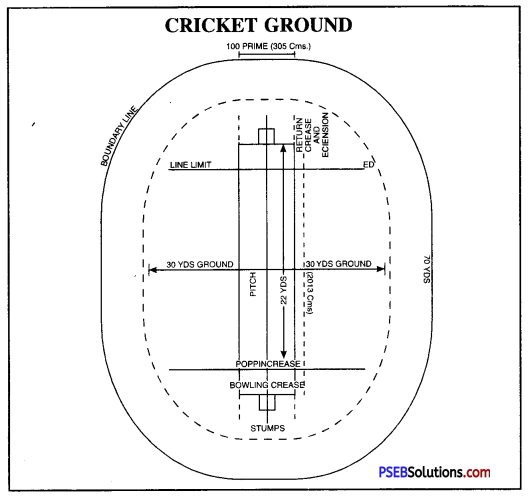
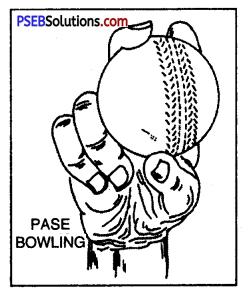
![]()
![]()
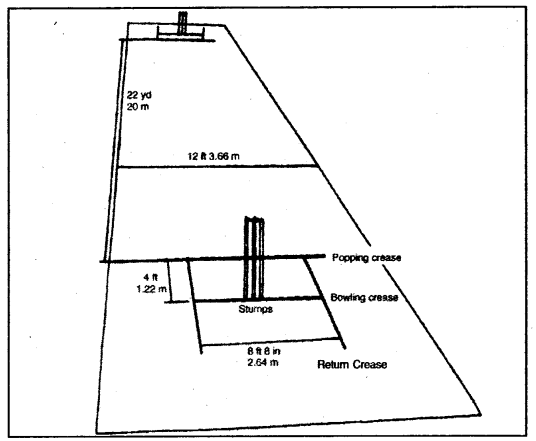

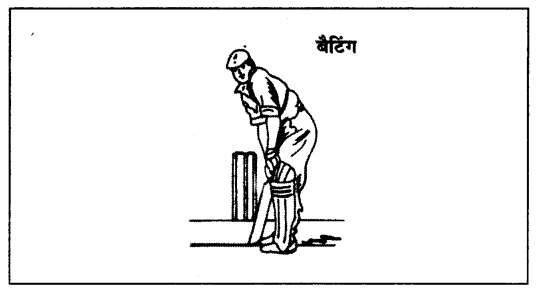
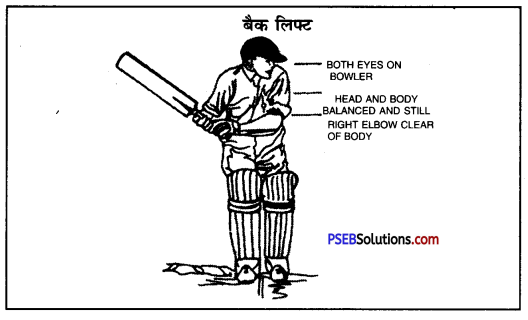
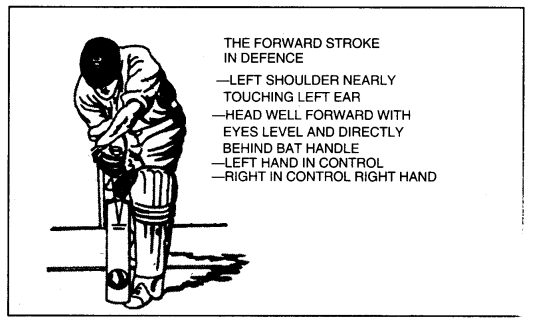
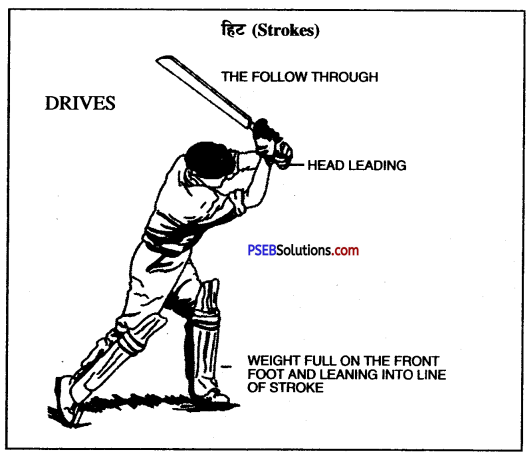
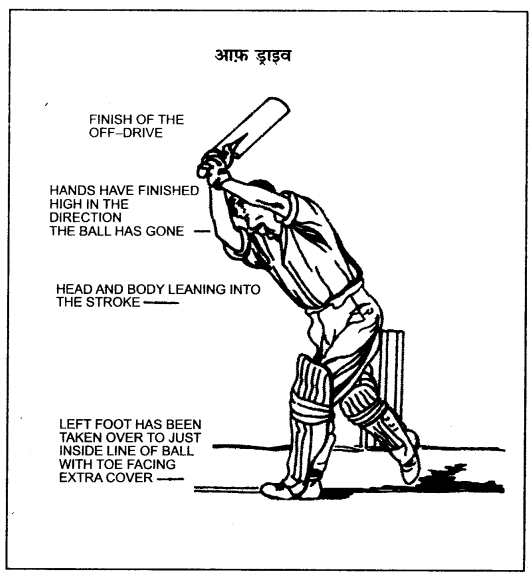
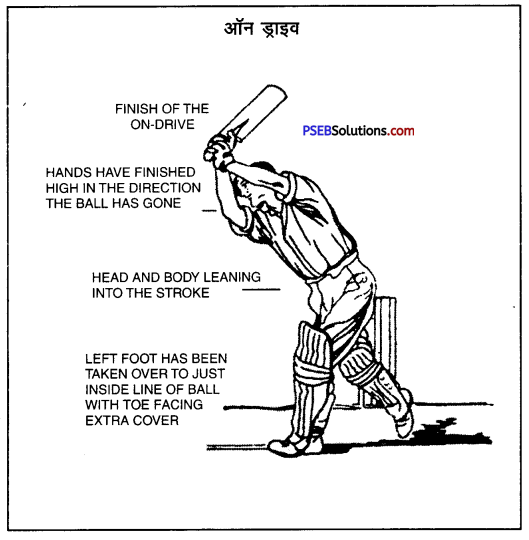
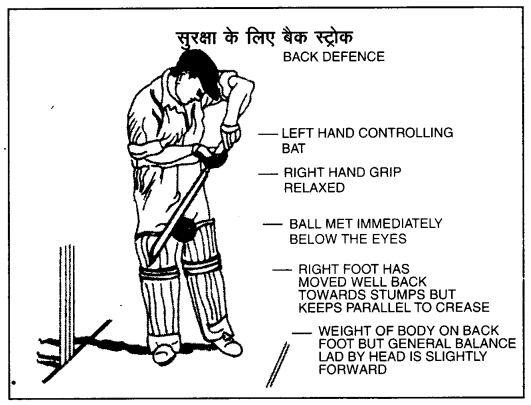
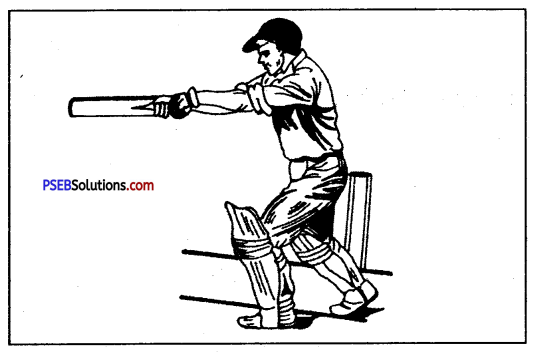
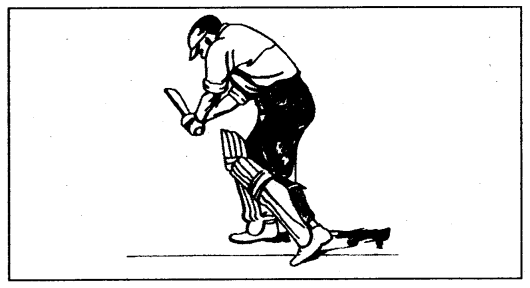
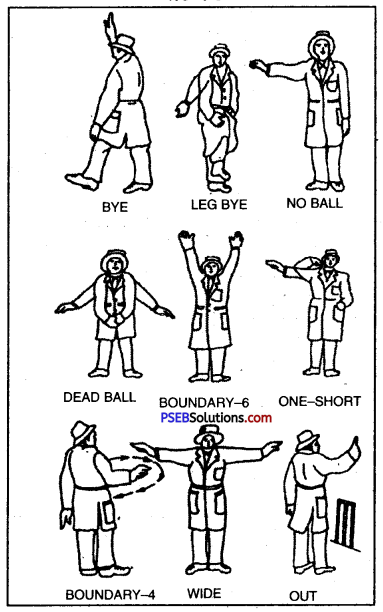
![]()
![]()
![]()
![]()
![]()
